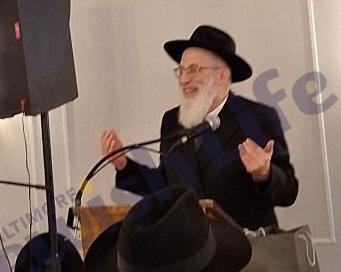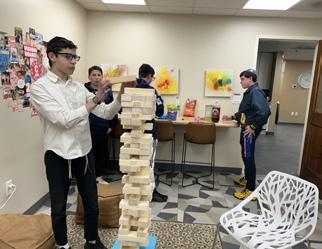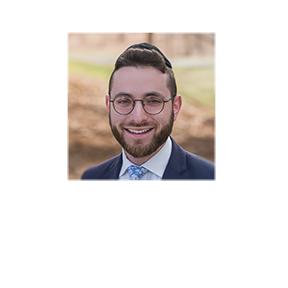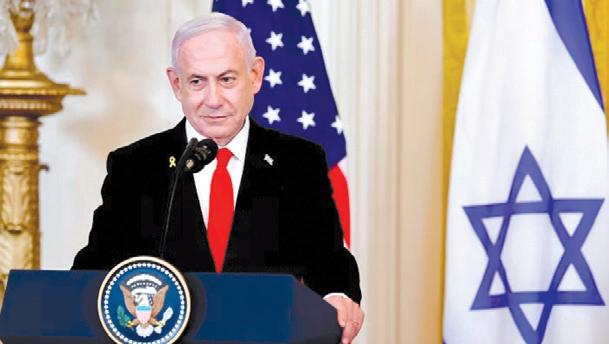

MIDWINTER HOURS
THURSDAY FEB 6 10:00am – 5:00pm
FRIDAY FEB 7 12:00pm – 4:00pm
SUNDAY FEB 9 10:00am – 8:00pm
MONDAY FEB 10 10:00am – 5:00pm



MIDWINTER HOURS
THURSDAY FEB 6 10:00am – 5:00pm
FRIDAY FEB 7 12:00pm – 4:00pm
SUNDAY FEB 9 10:00am – 8:00pm
MONDAY FEB 10 10:00am – 5:00pm










If you answer “Yes” to any of these questions, this seminar is for you!
• Are you facing, for the first time, as a single or a couple, the challenges of managing your money and are not really sure how to do it?
WHEN: Sunday, March 9, 2025 7:30PM
Ner Tamid Congregation 6214 Pimlico Road TO
Send your names, the number of attendees and your Email address to: LSJBaltimore@Gmail.com
Reservations are strongly recommended for space planning purposes. Feel free to Email questions about the seminar or coaching. Attendees are encouraged to sign-up for in-home coaching sessions to help put the information conveyed in the seminar into practice.
• Do you think that you have adequate income but never seem to have enough money?
• Do you feel out of control when it comes to money and try to avoid thinking about it?
• Do you think that you should know about how to manage money, but were never taught and have tried to figure it out on your own, but never get a good handle on the process?
• Do you know how much you can really afford to purchase a house?
• Are the balances on your credit card increasing and you do not know why they are going up or how to stop it?
• Do you and your spouse not see eye-to-eye on how much money should be earned and spent that it has led to increasing family tension?
When the Yidden stood at the edge of the Yam Suf, with Mitzrayim closing in behind them, the moment called for an unimaginable level of bitachon. The sea had not yet split, there was no clear path forward, yet Hashem commanded them: “Why are you crying out to Me? Tell the Bnai Yisrael to travel forward!” The Nefesh HaChaim explains that the geulah depended on their trust in Hashem. If they stepped forward with emunah peshutah, without fear, then that itself would cause the sea to split before them. The neis would come as a response to their unwavering faith.
In our own days, we have seen a living example of such emunah in Agam Berger. For 482 days in Hamas captivity, she endured unimaginable suffering, yet she refused to bend. She was held in dire conditions, with little access to food, medical care, or basic hygiene. Despite the deprivation, she became a source of quiet strength for those around her.
Even under immense pressure, she remained steadfast in her faith, refusing to eat non-kosher meat despite severely limited access to food. Reports indicate that Agam, held alongside Liri, defied her captors’ orders to move into the tunnels and was instead kept above ground in harsh conditions. She and other hostages were forced to cook for their captors but were denied the food themselves. Throughout her captivity, she was moved between at least ten different locations, each one bringing new hardship and uncertainty.
Chazal tell us that Nachshon ben Aminadav stepped into the Yam Suf before it split. He walked forward, not knowing if he would be swallowed by the waves, but believing with emunah sheleimah that Hashem would bring salvation. Agam Berger, too, walked into her own yam suf, without any guarantee of what lay ahead, yet refusing to compromise her Yiddishkeit. She did not wait
for a neis—she acted with faith, and that betachon itself was the greatest miracle.
The achdus of Klal Yisroel was palpable throughout her captivity. Her parents, unwavering in their own emunah, were supported by Yidden across the world. When she was finally released on January 30, 2025, in northern Gaza, it was not just her personal geulah—it was a victory for Klal Yisrael- a triumph of Torah and mitzvos over evil and darkness.
Upon her return, the first moments were filled with kiddush Hashem—hafrashas challah, tefillah, brachos. Just as the Yidden sang Shiras HaYam after witnessing Hashem’s greatness at the sea, so too, her return was met with joy and gratitude, a song of emunah that resonated throughout Klal Yisroel. In her first message upon being freed, she declared: “I chose the path of faith, and with the path of faith, I have returned—thank you to all the people of Israel and our heroic IDF soldiers. There is no one like you in the world!”
Her story reminds us all that true bitachon is not about waiting for the neis, but stepping forward even when the sea has not yet split. We all face the challenges of the yam suf in our lives—moments when the path ahead seems impassable. But the Torah teaches us: walk forward, trust in Hashem, and the path will be revealed. Agam Berger’s story is not just one of survival; it is a living testament to what it means to be a Yid. Her emunah, her refusal to let go, is a lesson for each of us—to hold fast, to trust, and to walk forward with unwavering emunah, no matter what lies ahead.
Wishing everyone a peaceful Shabbos
Aaron M. Friedman
and mazal tovs to
Comfort Year-Round:
Experience stable indoor temperatures, and reduce drafts, with warm winters and cool summers, when you upgrade to spray foam insulation in your attic.

Save Big on Energy Costs:
Cut your heating and cooling bills by 30-50% and make your HVAC system work smarter, not harder.
Breathe Better:
Enjoy improved air quality with reduced drafts and outdoor pollutants, creating a healthier living environment.


Yoni Yagodovsky, Magen David Adom’s director of international relations, offered an insider briefing on the state of emergency medical response in Israel.
American Friends of Magen David Adom (AFMDA) and Hatzalah of Baltimore held a joint breakfast and briefing on January 28, the first ever local event organized by the two groups. Held at Hatzalah’s Baltimore headquarters, the event was hosted by Hatzalah of Baltimore President Eli Goldstein and Executive Director Dovid Heyman and drew 25 attendees.
Yoni Yagodovsky, Magen David Adom’s director of international relations and an expert on mass-casualty response, offered an insider briefing on the state of emergency medical response in Israel, detailing the ways that MDA has grown and developed to meet the nation’s needs since the October 7 attacks. In remarks entitled “First Responders in Israel: Lessons for Baltimore & Beyond,” Yagodovsky addressed the ways that lessons learned in Israel could also help local emergency response teams better address their communities’ needs.
He also spoke of the increased opportunities for Chevra Hatzalah of the
US medics to volunteer with MDA in Israel, helping to shore up the nation’s EMS capabilities at a time of growing needs on the ground.
Among those in attendance was City Councilman Yitzy Schleifer, Rabbi Jonathan Aryeh Seidemann of Kehilath B’nai Torah, Hatzalah board member Shmuel Luxenburg, and Dr. Ron E. Samet, president of Bikkur Cholim of Baltimore, a volunteer-based organization dedicated to addressing the needs of Jewish patients confronting medical challenges.
Danny Kochavi, AFMDA’s chief of staff, represented Magen David Adom, along with Ira Gewanter, director of AFMDAs Mid-Atlantic Region.
Gewanter presented the members of Hatzalah with a signature mezuzah of the kind displayed in MDA’s Marcus Blood Center, where Israel’s blood supply is tested, processed, and stored. It will be affixed to the doorway of Hatzalah’s training center to signify open doors within a collective mission to save lives.
“Hatzalah has been critical first responders for me and my family on different occasions, and it was terrific to start my day reinforcing how fortu-
Vizhnitzer Rebbe Visits Baltimore
The “bagleitin” of the Vizhnitzer Rebbe from Mercaz Torah U’Tefillah to his host’s home, following an inspiring Shabbos in Baltimore with hundreds of Chassidim




nate we are to be in a community that profoundly cares for each other and our family in Israel together. I anticipate more opportunities for close partnership going forward,” said Gewanter.
About Magen David Adom MDA is Israel’s emergency services system. A leader in mass-casualty response and in EMS technology, Magen David Adom treats and transports more than 1 million people to hospitals every year; collects, safety tests, and distributes nearly all the blood to Israel’s hospitals; and, through its affiliation with the Red Cross movement, responds to disasters around the world. For more information, visit afmda.org.

Melava Malka And Siyum Mishnayos At KAYTT (Rav Dovid Heber), With Guest Speaker, Rav Yosef Lipson.





Jewish Educational Services (JES), an agency of The Associated: Jewish Federation of Baltimore, hosted its 2nd Annual Educator Expo on Sunday, January 26, at Moses Montefiore Anshe Emunah Synagogue in Baltimore. The event provided an invaluable platform for educators to share best practices, showcase their work, and engage in meaningful peer-to-peer collaboration.
Yael Zelinger, Day School Liaison at JES and one of the event’s organizers, emphasized the power of peer-to-peer coaching in professional development. “What energy! What a celebration! Our presenters truly rocked the house with their engaging and well-planned sessions,” she expressed. “At JES, we are dedicated to elevating teachers while showing our appreciation. “Our goal is for educators to feel seen, valued, and supported for their incredible work, and the Expo exemplifies this by bringing them together to learn, connect, and grow.”
The Expo was designed to offer classroom teachers the opportunity to present their innovative teaching strategies, learn from colleagues, and access free classroom materials. The event featured numerous giveaways and raffles, including generously- sponsored door prizes by Fun and Function, Wolf Cuts, and Gifts by Gilda.
The Expo gathered nearly 75 educators, featuring 30 presenters and educational vendors from 10 Baltimore schools. Under the theme “Connect,
Learn, and Inspire,” attendees explored exhibits, joined discussions, and shared ideas to enhance teaching. Topics included Differentiated Chumash Curriculum, Game-Based Assessment, Art for Reading Comprehension, and Positive Classroom Management. Beyond learning new techniques, participants enjoyed networking and connecting with fellow educators.
Attendee feedback underscored the Expo’s impact. Jodi Wahlberg, a JES Board Member and Director of the MS Academic Support Program at Krieger Schechter Day School, shared her enthusiasm: “What a wonderful expo for educators today! I really enjoyed learning from such passionate educators in our community. Teaching can be very isolating, and it’s so important to share ideas to refresh our repertoire and broaden our approaches! Presenters seemed empowered, and participants listened attentively. Kol Hakavod to your team for putting together this wonderful event!”
Chaya Tropper, Professional Development Specialist at JES, echoed this sentiment: “I think this is a wonderful venue to bring more conversation, skills, and collaboration to Baltimore. It also gives teachers a valuable opportunity to be recognized and celebrated.”
For Zahava Kimelfeld, a special educator at Talmudical Academy and a returning presenter, the Expo was a chance to blend creativity with professional growth. “The Educator Expo offers me a creative outlet to craft


a proposal and design a display to showcase my work with my students. This year, I even involved my students in the process. They eagerly performed a reader’s theater play I wrote, completing its lesson, designing scenery, selecting costumes, and presenting their work on a trifold and cheered me on as the Expo approached. Additionally, the Expo is an exciting opportunity to connect with other teachers from different backgrounds and learn from their experiences.”
The event welcomed a diverse group of educators, including Rabbeim, teachers, and homeschooling parents, all eager to explore innova-

tive educational approaches. JES is honored to enable the showcasing of the remarkable talent and dedication within Baltimore’s Jewish educational community, highlighting the collective passion for providing engaging, high-quality education to students.
With its growing success, the JES Educator Expo continues to serve as a vital hub for professional development, reinforcing the value of collaboration in strengthening Jewish education in Baltimore. Be on the lookout for our next Expo and consider joining us as an attendee or even as a presenter to share your insights and expertise!
Despite the chilly temperatures outside, the warmth inside was undeniable as over 500 women gathered in support of an incredible organization at the AIM Event this year. The evening brought together women representing various shuls, stages of life, and backgrounds, to celebrate and support AIM—a vital resource for postpartum women and families in our community.
The event was nothing short of a celebration. Guests entered a
snowy retreat, enjoyed a delicious spread of food, were entertained by the talented Malkie Knopfler, star of The Malkie Show, and engaged in laughter, heartfelt moments, and the joy of reconnecting with old friends and making new ones.
As we heard more about the remarkable work AIM does, we were reminded of the invaluable services they provide to women and families navigating the postpartum period. This year’s AIM Event exceeded all
expectations, and the overwhelming support of the Baltimore community was felt by all in attendance.



SINAI HOSPITAL
1st floor, off the Blaustein
Lobby
JOHNS HOPKINS
1st Floor, Blalock Room 175
GBMC
New Building, Main Entrance,
Adjacent to the Spiritual Care offices – Room 3281
UNIVERSITY OF MD MEDICAL CENTER
6th Floor, Gudelsky Conference room
UNION MEMORIAL
First floor, Johnson Professional Building across from the Zen Meditation Garden

Beth Tfiloh Dahan Community School is Baltimore’s only co-educational Jewish day school serving PreSchool through Grade 12. Beth Tfiloh offers both topnotch general and Jewish studies, incorporating history, language, culture, and values. Beth Tfiloh’s dual curriculum prepares its students to be more than academically ready to succeed after High School, and at the same time commits itself to providing a well-rounded arts and athletics program. BT recognizes that there are many life lessons that can be learned through participating in sports – leadership, tenacity, grit, to name a few – and that those skills translate directly into more confident and skilled communicators and leaders. One way to encourage these characteristics is by supporting student athletes and providing them with the best playing experience possible.
Thanks to the vision of school leadership, the aspirations laid out in the school’s strategic plan, and the generosity of the Benus family, the field - built in memory of Jacob Benus - has changed the face of BT athletics. A turf can improve an athlete’s playing conditions because the surface is even and consistent, it’s professionally groomed, and the field is not weather-dependent. BT’s new field is a striking enhancement to the already state-of-the-art campus and offers more playing space than the previous field. Girls and boys soccer, girls and boys lacrosse, and girls softball teams are ecstatic to play on this advanced surface and very proud of their new home field.
The enlarged promenade features a brick plaza, which has given BT community members a chance
to become part of the Beth Tfiloh legacy. Seating capacity has doubled and is more comfortable than ever for spectators cheering on both home and away teams. From their sneak peek opening event on June 5, 2024, the turf field has been a welcoming backdrop to their state-of-the-art campus which also has hosted outdoor classrooms and welcomed visiting athletes for various sporting events.
The field first opened in August 2024 for pre-season boys and girls varsity soccer tryouts and practices, followed by the official fall season and featured a Snack Shack run the their Parent Association which sold snacks and swag. In October, the field played host to a BT Fall Soccer and Volleyball Tournament, welcoming both boys and girls soccer teams from the Philadelphia and DC-metro area who visited and engaged in friendly but intense round-robin competitions.
Beth Tfiloh’s annual Alumni Weekend, held each year over the extended Thanksgiving weekend, gave BT alumni athletes a chance to test the field out for themselves. As Max Rakamimov ’23 shared, “Playing on the turf field really enhances the Beth Tfiloh outdoor athletics program, from soccer to lacrosse to softball, BT sports is reaching higher levels. The turf really allowed me to enjoy the game more. It felt more authentic and natural, compared to the old field, where the conditions could sway the game one way or another.”
Sunday Sports, a BT tri-season sports program, gives Beth Tfiloh community children - ranging from age 3 through 4th grade - a chance to enjoy, learn, and play a variety


of sports. Looking ahead to Spring 2025, girls softball teams will be able to play on the new turf softball field generously sponsored by the Leibowitz Family, and BT’s boys and girls lacrosse players will kick off their season on the new turf field as well.
Expanding the campus and creatively using every facet of space is an important element of BT’s strategic plan, a school blueprint for the future providing aspirational direction for the school. BT joins 8 other Baltimore County private schools to acquire a turf field for their student body and is the second turf field in Maryland for a Jewish day school –making BT the perfect environment for serious student athletes, in and out of the classroom.
The field also provides a creative space for additional outdoor learning. PreSchool classes often convene on the new promenade for walks, when hosting speakers. Some teachers have

brought their students and lesson plans outdoors, using the turf field as an alternative classroom.
While Beth Tfiloh may be a smaller school, it’s clear that they take their athletics programs seriously, and their 41 interscholastic teams rival larger private schools by proudly celebrating multiple IAMM, MIAA, and championship teams. BT is also known throughout the Jewish day school community for hosting the annual Weiner Family Basketball Tournament, a co-ed tournament that just completed its 36th annual competition and welcomes boys and girls basketball teams from all over the United States, Canada, and Israel for a round-robin competition, Shabbaton (fun-filled retreat), friendship-building, and intense competition.
Could a Beth Tfiloh education be perfect for your student athlete? Visit www.bethtfiloh.com/admissions to visit their campus or schedule a tour.

by DOV WELLER
For millennia, reciting Parashas HaMahn has been recognized as a powerful segulah for parnassah. Renowned author Dov Weller delves deeply into Parashas HaMahn, sharing numerous commentaries, practical insights and true stories of bitachon.
Reciting — and understanding — Parashas HaMahn strengthens our emunah in Hashem and His direct role in our financial life. And as we grow in our emunah, we will see the conduits of berachah open before us.
“Whoever recites Parashas HaMahn each day is promised that he will never experience a lack of sustenance”


Tefillos and Segulos for Parnassah

— Rabbeinu Bachya, Shemos 16:16



Finally, there's a better way to find your next delicious dish! With each micro cookbook in the series zeroing in on a different theme, this first book features boneless chicken recipes that are quick, tasty, and approachable. So next time you buy or defrost a package of boneless chicken and wonder how to change it up into something magical... Micro Peas for the mouthwatering solution to "chicken again?!"

By: BJLife Newsroom
Agroup of Baltimore / Owings Mills Jewish military veterans drove in vans to the National Museum of American Jewish Military History in Washington, D.C on Sunday, February 2, 2025. Approximately 40 veterans and supporters were in attendance at the museum. The trip was an opportunity for local military veterans to reflect on the significant contributions of Jewish Americans in military service throughout the nation’s history.
Founded in 1958, the museum preserves and shares the stories of Jewish Americans who have served in the United States Armed Forces. The veterans explored exhibits detailing Jewish military history from the Revolutionary War to the present day. Through personal narratives, artifacts, and historical accounts, the museum highlights the bravery, sacrifices, and dedication of Jewish service members who have defended the nation.
For many attendees, the trip served as a powerful reminder of the dual heritage they carry as both proud Jews and proud veterans. “Visiting this museum is a deeply meaningful experience. It honors the Jewish men and women who have served our country and reminds us of the sacrifices they made,” said Dan Berkovitz.
Rabbi Zelinger’s 4th grade class at TA held an amazing Succah fair in honor of their siyum on Maseches Succah. They proudly showed their families model succahs they made depicting different mishnayos they learned, and enjoyed a Sukkos themed cake.



The museum features compelling exhibits, including displays on Jewish Medal of Honor recipients, military chaplains, and the experiences of Jewish soldiers during major conflicts. Attendees engaged in discussions about the role of Jewish service





members in shaping U.S. military history and the importance of preserving these stories for future generations.
The Jewish War Veterans of the USA, founded in 1896, is the oldest active veterans’ organization in



Mthe country. Post 167 (Baltimore / Owings Mills) remains committed to honoring Jewish military service, fostering camaraderie among veterans, and promoting awareness of Jewish contributions to the armed forces.
azel tov to OCA 1st graders on their Messibat Siddur! Students performed some of the songs and tefillot they sing daily, shared what tefilah means to them, and received a brand new siddur, with the siddur cover designed by their parents as a surprise. We are so proud of our 1st graders for reaching this special milestone and wish for them to always be inspired by the words of tefillah they recite each day!






Over 140 supporters gathered for the Mikvah Emunah Society (MES) of Greater Washington Annual Dinner at Kemp Mill Synagogue honoring Gila Wakschlag and Dr. Richie Broth for the important and tireless volunteer work they have done for the Mikvah. The dinner was co-chaired by Elise Saks and Ilana Branda, who along with their dinner committee organized a beautiful event with decor and food focused on highlighting the Shivat Haminim (seven species) as a way to demonstrate that even when we are in Silver Spring, Israel is never far from our minds.
Guests enjoyed some social time as well as a delicious hot buffet dinner. During the dinner, the program opened with Naomi Carmel (MES Co-President along with Dr. Caroline Namrow) introducing the evening, giving special appreciation to mikvah manager Chayie Chinn, facilities manager Ronna Eisenberg, and all of the mikvah attendants and greeters. Rabbi Ari Israel led
everyone in saying a perek (chapter) of Tehillim for Klal Yisrael, the chaylaim, and the chatufim.
The main part of the evening was focused on the honorees and their contributions and unwavering commitment to the MES. Gila has been serving on the MES Board of Directors for the past 21+ years and has been the Treasurer for 17 years (Rachel Ella-Cattan took over the Treasurer position a year ago) with a keen eye for detail making sure that all of the finances are correct.
Richie has been serving on the MES Board of Directors for the past 16 years taking care of the Mikvah’s needs at any hour - ranging from climbing a 25-foot ladder to the roof to let in rain water when it is raining to draining the Mikvah using buckets. Both Gila and Richie had their immediate and extended families surrounding them at the event and both plan to continue serving on the MES Board of Directors.
The evening ended with a Bracha
of Hodaya for all the hostages who have come home over the past few weeks and a continued Tefillah for all of the remaining hostages to be released and a healing of the Neshamot of all of Klal Yisrael, and especially the hostages, their families, and all of the members of Tzahal who continue to defend our people and our homeland. At the close of the evening, guests were offered coffee, tea, and desserts to-go in the lobby, and Ma’ariv took place in the Beit Midrash.



One feeling that was evident during the program was that the Mikvah relies heavily upon volunteers who dedicate their time to help with necessary tasks and responsibilities as well as financial donations to keep the Mikvah clean and running to serve the community. Both honorees noted how important it was for them to become Mikvah supporters and volunteers when they were younger, and would love to see the torch passed to younger members of the community. If you would like to get involved, please reach out to elisesaks@gmail.com.
The Kulam basketball league has officially launched its new season, and the competition is already heating up! With five teams battling it out on the court, the league promises an exciting season of action-packed games.
The standout team so far is Friedman Engineering, led by captain Benzion Bogart. The squad has come out strong, boasting an impressive 2-0 record after victories against Sky Plumbing and Greater Washington Jewish Life. The team’s chemistry on the court has been evident, with solid performances and teamwork propelling them to an early lead in the standings.
On the other side, Katz Law, guided by team captain Gavriel Goldstein, has also been making waves. The team triumphed over Wohl and Trail, showing resilience and strategic play that promises more wins as the season progresses.
The games thus far have been exciting, with spirited competition from
all teams involved. Spectators can expect more high-energy matchups as the season continues.
“We’ve had some great games already, and I’m looking forward to more,” said Benzion Bogart of Friedman Engineering. “The teams are all playing hard, and I think the rest of the season is going to be a lot of fun.”
As the season unfolds, Kulam basketball fans can anticipate thrilling plays, buzzer-beaters, and some friendly rivalries. It’s shaping up to be a fantastic season for both players and fans alike. Keep an eye on these teams, as they continue to battle for top honors in the league.
Kulam: More Than Just Sports
Kulam isn’t just about basketball – it’s about providing teens in yeshiva with healthy outlets and fostering a sense of community. This week, in a beautiful display of kindness, Kulam teens will visit local senior citizens to wish them a warm Shabbat Shalom. It’s just one of many initiatives de-
signed to encourage teens to give back to the community.
In addition, the 8th graders will be coming together for a fun and creative Paint Night Melave Malka, where they can bond and unwind with peers.
Kulam also continues to support its alumni. The recent opening of a Teen Lounge offers a dedicated space for them to relax and play friendly games with each other. This is an opportunity for alumni to stay connected and build lasting friendships.
For more information about Kulam’s programs and events, visit kulamsilverspring.org.





Baltimore Jewish Home and Baltimore Jewish Life extends sincere condolences to its publisher
Mr. Moshe Meir Rubin and the entire Rubin Family on the passing of their father
Mr. Ephraim Rubin Z”L




On Monday, U.S. Secretary of State Marco Rubio announced that Salvadoran President Nayib Bukele agreed to accept deportees from the United States of any nationality, as
well as violent criminals who are U.S. citizens currently imprisoned.
“In an act of extraordinary friendship to our country … (El Salvador) has agreed to the most unprecedented and extraordinary migratory agreement anywhere in the world,” Rubio said.
The country will continue accepting Salvadoran deportees who illegally entered the U.S. and will also “accept for deportation any illegal alien in the United States who is a criminal from any nationality, be they MS-13 or Tren de Aragua, and house them in his jails,” Rubio said. Those two groups are notorious transnational gangs with members from El Salvador and Venezuela.
In addition, Bukele “has offered to house in his jails dangerous American criminals in custody in our country, including those of U.S. citizenship and legal residents,” Rubio said.
Bukele confirmed the agreement on X. ”We are willing to take in only convicted criminals (including convicted U.S. citizens) into our megaprison (CECOT) in exchange for a fee,”
he said. “The fee would be relatively low for the U.S. but significant for us, making our entire prison system sustainable.”
In El Salvador, under a state of emergency that has been in effect since 2022, authorities can detain anyone simply on the suspicion of being members of a gang, and there is no differentiation between alleged gang members and people found guilty of a crime.
El Salvador has one of the highest incarceration rates in the world, something that Bukele has boasted shows that his country is secure.

A strain of Ebola killed one person, a nurse, in Kampala, Uganda, last week. Subsequently, other people were affected by the illness, and the government declared an outbreak last week.
Now, officials are investigating the source of the outbreak. Ebola is spread by contact with bodily fluids of an infected person or contaminated materials. Symptoms include fever, vomiting, diarrhea, muscle pain, and at times internal and external bleeding. It may be hard to prove where the disease came from, as Kampala has a highly mobile population of about 4 million. The nurse who died had sought treatment at a hospital just outside the capital and later traveled to Mbale in the country’s east, where he was admitted to a public hospital. He also sought the services of a traditional healer.
At least 234 contacts in this outbreak have been identified, according to the Ministry of Health. The country has access to more than 2,000 doses of a vaccine that fights against the Sudan strain of the
6:15 am Young Israel Shomrai Emunah M-F
6:25 am Southeast Hebrew Cong., Knesset Yehoshua M-F
6:30 am Beth Sholom Congregation M-F
Beit Halevi (Sfardi) M, T
Chabad of Silver Spring M-F
Ohev Shalom Talmud Torah OLNEY M-F
Young Israel Shomrai Emunah S YGW M, Th
6:35 am Ohr Hatorah M, Th
6:40 am YGW S, T, W, F
Magen David Sephardic Congregation M-Th
6:45 am Beit Halevi (Sfardi) S, T, W, F
Kemp Mill Synagogue M, Th
Ohr Hatorah T, W, F
Young Israel Shomrai Emunah M, Th
6:50 am Woodside Synagogue/Ahavas Torah M, Th Silver Spring Jewish Center M-F
Chabad of Upper Montgomery County M-F
6:55 am Young Israel Shomrai Emunah T, W, F
7:00 am Kemp Mill Synagogue T, W, F
Southeast Hebrew Cong., Knesset Yehoshua S Silver Spring Jewish Center S
Woodside Synagogue/Ahavas Torah T, W, F
Young Israel Ezras Israel of Potomac T, W, F
7:05 am Kesher Israel M, Th
7:15 am Kemp Mill Synagogue M, Th Kesher Israel T, W, F
Ohev Sholom Talmud Torah/The National Synagogue M-F
Ohr Hatorah S
7:30 am Chabad of DC M-F
Chabad of Potomac M-F
JROC M-F
Kemp Mill Synagogue T, W, F
Southeast Hebrew Cong., Knesset Yehoshua M-F
Young Israel Shomrai Emunah S Young Israel Shomrai Emunah (Sfardi) M-F
7:45 am YGW (Yeshiva Session Only) S-F
8:00 am Beth Sholom Congregation S
Kemp Mill Synagogue S Kesher Israel S
Ohev Shalom Talmud Torah OLNEY S
Southeast Hebrew Cong., Knesset Yehoshua S
Chabad of Upper Montgomery County S Woodside Synagogue/Ahavas Torah S
8:00 am YGW (High School; School-Contingent) S-F
Young Israel Ezras Israel of Potomac S Young Israel Shomrai Emunah (Sfardi) S
8:05 am Ezras Israel Congregation of Rockville M, Th
8:15 am Ohr Hatorah S Ezras Israel Congregation of Rockville S, T, W, F Kehilat Pardes / Berman Hebrew Academy S-F Silver Spring Jewish Center M-F
8:30 am Chabad of DC S Chabad of Potomac S JROC S Ohev Sholom Talmud Torah/The National Synagogue S Silver Spring Jewish Center S YGW (Summer Only) S-F
8:45 am Young Israel Shomrai Emunah S-F
9:00 am Chabad of Silver Spring S Kemp Mill Synagogue S
12:30
Before Shkiah (15-18 minutes), S-TH
Beit Halevi (Sfardi)
Beth Sholom Congregation
Chabad of Potomac
Chabad of Silver Spring
Chabad of Upper Montgomery County
Ezras Israel Congregation of Rockville (20 min before, S-F)
JROC
Kemp Mill Synagogue
Kesher Israel
Magen David Sephardic Congregation
Ohev Sholom Talmud Torah/The National Synagogue Ohr Hatorah
Silver Spring Jewish Center
Southeast Hebrew Congregation, Knesset Yehoshua Woodside Synagogue/Ahavas Torah
Young Israel Ezras Israel of Potomac
Young Israel Shomrai Emunah (Asheknaz) Young Israel Shomrai Emunah (Sefarhadi) maariv
6:00 pm YGW School Days
7:30 pm Young Israel Shomrai Emunah
8:15 pm OSTT (OLNEY)


virus.
Uganda has had multiple Ebola outbreaks, including one in 2000 that killed hundreds. Tracing contacts is key to stemming the spread of Ebola, which manifests as a viral hemorrhagic fever.
The confirmation of Ebola in
in the east African region. Tanzania declared an outbreak of the Ebolalike Marburg disease last month, and Rwanda in December announced that its own outbreak of Marburg was over.
Ebola was discovered in 1976 in two simultaneous outbreaks in South Sudan and Congo, where it occurred




Looking for an exotic place to visit? Consider Rason, one of the least visited places in North Korea. The secretive country is now open for visitors for the first time in five years – just in time to be there for the celebrated birthday of late leader Kim Jong II, one of the nation’s biggest holidays.

Rason,” which is known as North Korea’s special economic zone.
The city has operated differently from the rest of the country since 1991 and has been used as a testing ground for new economic policies, the country’s first mobile phone network, and the first card payment system.
Among other attractions, Koryo Tours said, tourists can visit the “Sea Cucumber Breeding Farm and Paekhaksan Combined Foodstuff Processing Factory.” They will also be offered the chance to open their own North Korean bank account during a stop at the Golden Triangle Bank.
Koryo Tours, a tour operator based in Beijing, announced this week it had reopened bookings to see Rason after North Korea sealed its borders in 2020 during the Covid pandemic. The tour includes four nights in Rason, along with two nights in the Chinese city of Yanji. It will cost around $720.
The first tour is set to take place between February 12 and 18. Day of the Shining Star, which is typically celebrated on February 16, is when North Koreans remember their late revered leader, father of current leader Kim Jong Un, with public displays and parades.
Pyongyang, North Korea’s capital, remains closed to tourists.
Before the pandemic, the country hosted hundreds of thousands of Chinese tourists who provided up to $175 million in extra revenue in 2019, according to the South Korea-based news outlet NK News.
The United States banned citizens from traveling to the country after the death of American student Otto Warmbier in 2017. The 22-year-old stole a propaganda banner from a hotel during a visit to Pyonyang in January 2016 and was later sentenced to 15 years hard labor for committing a hostile act against the government. The University of Virginia student was returned to the U.S. in a coma the following year and died shortly afterwards.
The latest tour promises to take tourists to the “must-see sites in
From the Three Countries Border Viewpoint, visitors will also be able to view neighboring China and Russia Rason does not have an airport; visitors need to cross the border with China in a car.
At least 35 worshippers died and dozens more sustained injuries after a barrier near a river in India collapsed under the pressure of hordes of people during a religious holiday.
The tragedy took place at around 1 a.m. on Wednesday, which marked one of the days of the Hindu holiday of Maha Kumbh Mela. As part of Hindu tradition, tens of millions of worshippers immerse themselves in sacred rivers to celebrate the festival, remove their impurities, and make progress towards “spiritual liberation.”

Later that day, Narendra Modi, the prime minister of India, addressed the nation, declaring that the crush “led to the loss of some virtuous souls, and some people have also been hurt.”
“I express my heartfelt condolences to the affected families, and pray for the speedy recovery of the injured,” said Modi, adding that he is “constantly








































































in touch” with the state government of Uttar Pradesh, where the tragedy occurred.
“Suddenly, there was a huge crowd and we got stuck somehow. People started pushing aggressively and we fell,” a witness told reporters.
Authorities said late Wednesday morning that the situation was “under control” but did not provide a definitive death toll.
On Wednesday, the festival’s most significant day, around 100 million Hindu worshippers were set to travel to the Triveni Sangam, Uttar Pradesh’s holy river, with devotees visiting from all parts of the globe. Over the span of six weeks, around 400 million individuals are likely going to visit the rivers of Prayagraj.
The Kumbh Mela pilgrimage takes place every 12 years and is widely seen as the “festival of festivals” in the Hindu religious calendar in India. This year’s celebration is particularly significant as the grand Kumbh Mela takes place only every 144 years, marking the 12th Kumbh Mela and a special celestial alignment of the sun, moon, Jupiter and Saturn.
The World Expo begins in two months in Osaka, Japan, and will run for six months. Now, the Japanese city is banning public smoking as it hopes to become more visitor-friendly for the upcoming event.
Around 160 countries and regions are taking part in Expo 2025, the latest edition of an event held every five years in different global locations.
“The World Expo begins in April. We want to welcome many people from all over the world, so we want to make Osaka a city where people feel safe with smoke-free streets,” Mayor Hideyuki Yokoyama said in early January.

Before the ban, smoking was banned in six zones including the area around Osaka station. This has been expanded to the whole city, and violators face a fine of 1,000 yen, around $6.45.
Beginning in April, the wider Osaka region will prohibit smoking in restaurants with seating areas larger than 30 square meters, although lighting up in a separate space, such as a smoking room, is allowed.
Current national laws ban smoking in establishments with dining areas larger than 100 square meters.
There are concerns that the Expo won’t see the numbers that organizers were hoping for. About 7.5 million tickets had been sold by early January for the sixmonth event – half the organizers’ target.
Tobacco use in Japan has been falling in line with a broader global trend, with the ratio of smokers standing at 15.7 percent in 2023.
Japan’s central and local governments earn a yearly total of around two trillion yen in cigarette tax revenue. The national government also owns a one-third stake in Japan Tobacco, the world’s third largest tobacco company.

Sudan’s government claimed that the Rapid Support Forces, a militia the Sudanese army is at war with, hit a vegetable market in Omdurman on Saturday with air attacks and artillery shelling, killing at least 56 people, including many women and children, and injuring at least 158 others.
According to Culture Minister Khalid al-Aleisir, who is also a spokesman for the government, the attack caused widespread chaos.
“This criminal act adds to the bloody record of this militia,” he declared. “It constitutes a blatant violation of international humanitarian law.”

According to witnesses, the artillery shelling hit Omdurman from western Omdurman, a region that the RSF currently controls.
Following the tragedy, al-Nao Hospital’s staff said they were swamped by the death toll and number of injuries, with a hospital volunteer adding that they desperately need “shrouds, blood donors and stretchers to transport the wounded.”
A separate air attack on an area controlled by the RSF killed two civilians and injured dozens more, according to the local Emergency Response Room.
In April 2023, the RSF and the Sudanese military began fighting a war that has since caused tens of thousands of casualties, displaced millions, and forced half of the population into starvation. Just recently, the Sudanese army recaptured Khartoum from the rebels. A day before the attack on Saturday, Mohamed Hamdan Daglo, a commander for the RSF, vowed to expel the army from the capital.

New intelligence about Iran’s nuclear program has convinced U.S. officials that a secret team of the country’s scientists is exploring a faster, if cruder, approach to developing an atomic weapon if Tehran’s leadership decides to race for a bomb, according to current and former U.S. officials.
The development comes even amid signals that Iran’s new president is actively seeking a negotiation with the Trump administration.
The intelligence was collected in the last months of the Biden administration, then relayed to President Donald Trump’s national security team during the transition of power, according to the officials, who asked for anonymity to discuss sensitive details. The intelligence assessment warned that Iranian weapons engineers and scientists were essentially looking for a shortcut that would enable them to turn their growing stockpile of nuclear fuel into a workable weapon in a matter of months, rather than a year or more — but only if Tehran made a decision to change its current approach.
U.S. officials said they continued to believe that Iran and its supreme leader, Ayatollah Ali Khamenei, had not made that decision to develop a weapon, officials said in interviews over the past month. But new intelligence suggests that as Iran’s proxy forces have been eviscerated and its missiles have failed to pierce U.S. and Israeli defenses, the military is seriously exploring new options to deter a U.S. or Israeli attack.
Iran, officials said, remains at the nuclear threshold. In the years since Trump pulled out of the 2015 nuclear accord, the country has resumed uranium production and now has plenty of fuel to make four or more bombs. But that is not enough to actually produce a weapon, and the new evidence focuses on the last steps Iran would need to turn the fuel into one.
Trump has indicated that he is in no

















hurry to get into a direct conflict with Iran and seems open to a negotiation. When asked just after the inauguration whether he would support an Israeli strike on the facilities, he said: “It would really be nice if that could be worked out without having to go that further step.” Iran, he added, will hopefully “make a deal.” (© The New York Times)
Tehran and Baku have been at odds regarding their relationships with Israel. Iran has frequently criticized Azerbaijan for its security and business ties with Israel, while Azerbaijan has scolded Iran for interfering with Israel and for the vitriol that emanates from Iranian religious figures and from state-aligned media against the Jewish state.
Iran is once again concerned that Azerbaijan is warming toward the Jewish State. During a high-level meeting over the weekend in Tehran, Kamal Kharrazi, chairman of Iran’s Strategic Council on Foreign Relations and a top advisor to Supreme Leader Ayatollah Ali Khamenei, warned Azerbaijan about Israel’s expanding presence in the country.
“Countries should take their neighbors’ sensitivities into consideration,” Kharrazi told Hikmet Hajiyev, assistant to the president of Azerbaijan for foreign policy affairs, according to reports citing the Azeri embassy.

Last month, Azerbaijani President Ilham Aliyev strongly condemned comments by Seyyed Hassan Ameli, the Friday Prayer leader of Ardabil, who accused Baku of collaborating with Israel. Aliyev dismissed the remarks as baseless and politically motivated. But on January 25, Azerbaijan’s Foreign Affairs Ministry summoned Iran’s chargé d’affaires in Baku to protest what it described as anti-Azerbaijan propaganda in Iranian media.
Azerbaijan’s State Security Service recently announced it had foiled a terror plot targeting a prominent member of the country’s Jewish community. Police had arrested Georgian citizen Aqil Aslanov and Azerbaijani citizen Ceyhun Ismayilov near a Jewish center, suspecting them of being part of an assassination plan.
Aslanov, a known drug trafficker, was supposedly recruited by foreign intelligence agents while abroad and was offered $200,000 to carry out the hit. Azerbaijani intelligence officials suspect that Iran was involved.
Iran is also unhappy with Azerbaijan’s economic ties with Israel. Just days before the diplomatic meetings, Azerbaijan’s State Oil Company confirmed it had purchased a 10% stake in Israel’s offshore gas field, Tamar, from businessman Aaron Frenkel. The deal, which brings Azerbaijan into Israel’s energy sector,
is expected to have major geopolitical implications, further cementing the growing diplomatic and economic alliance between Baku and Jerusalem.
Despite the ongoing hostilities, diplomatic engagement continues between Iran and Azerbaijan. During Hajiyev’s visit to Tehran, discussions focused on regional security, academic collaboration, and cooperation between research centers and sociopolitical institutions.
Hajiyev also met with Mehdi Sanaei, political advisor to the Iranian president, and Foreign Minister Abbas Araghchi.

Two soldiers were killed on Tuesday morning when a Palestinian terrorist attacked an army checkpoint in Judea and Samaria.
Sgt. Maj. (res.) Ofer Yung, 39, from Tel Aviv, and Sgt. Maj. (res.) Avraham Tzvi Tzvika Friedman, 43, from Ein HaNatziv, were killed in the attack at Taysir checkpoint. Both served in the Ephraim Regional Brigade’s 8211th Reserve Battalion. Yung was a squad commander.
Eight other people were injured in the shooting.
The checkpoint is on a road leading from the Jordan Valley to the Palestinian village of Taysir and other Palestinian towns. The gunman managed to sneak up to a military post at the checkpoint, where he opened fire on troops just before 6 a.m.
The compound next to the checkpoint includes a watchtower and several structures, and it is manned by a squad of 11 soldiers and a commander. The terrorist was armed with an M-16 assault rifle and two magazines and was wearing a tactical vest. He approached the army post on foot overnight. At dawn, the assailant surprised two soldiers who were getting up to leave the post to open the adjacent Tayasir checkpoint for
Palestinian traffic.
The terrorist was killed when one soldier hurled a grenade at him during the firefight.
The IDF has been conducting a counter-terrorism offensive in the northern part of Judea and Samaria, including in several Palestinian towns near the site of the attack.
Over 35 gunmen were killed by troops during Operation Iron Wall, and another 15 were killed in drone strikes, the military said on Sunday. More than 100 wanted Palestinians have been detained, and troops have seized some 40 weapons and neutralized over 80 explosive devices during the operation, according to the IDF.
The area has seen a surge in Palestinian violence since Hamas’s October 7, 2023, attack on Israel from the Gaza Strip ignited the war there. Since then, troops have arrested some 6,000 wanted Palestinians across Judea and Samaria, including more than 2,350 affiliated with Hamas.
Israel’s ban on UNRWA came into effect on Thursday, following the Knesset’s decision in November to ban the United Nations organization from working on Israeli land and communicating with Israeli officials.
The agency, officially known as the United Nations Relief and Works Agency for Palestine Refugees in the Near East, claims to provide aid to refugees in Gaza and elsewhere. However, Israel has uncovered evidence that UNRWA workers played a role in perpetuating the October 7 massacre, during which 3,000 Hamas terrorists stormed southern Israel, murdering more than 1,200 people and kidnapping 251 others.
Additionally, Hamas uses UNRWA infrastructure to commit acts of terror, and UNRWA schools brainwash Palestinian children to hate Israel, the Jewish state found.


A day before the ban took effect, the Israeli High Court rejected a petition by Adalah, a human rights organization, to stop the ban. The Supreme Court noted that the ban only stops UNRWA from operating in Israel’s mainland, including East Jerusalem, but not in Judea and Samaria or Gaza.
The United States, under the leadership of President Donald Trump, supports Israel’s ban on UNRWA.
In 1949, shortly after the establishment of the Jewish state, the U.N. founded UNRWA to provide aid, health assistance, and education to Palestinians in the Gaza Strip, Judea and Samaria, and in Syria, Lebanon, and Jordan. UNRWA recognizes 5.9 million Palestinians as refugees solely because they’re descendants of Arabs who were in Israel following the Jewish state’s war of independence.
The United Nations has one other refugee agency—the U.N. High Commissioner for Refugees—which provides aid to all other refugees.
“Humanitarian aid doesn’t equal UNRWA, and UNRWA doesn’t equal humanitarian aid. UNRWA equals an organization infested with Hamas terror activity,” said Oren Mamorstein, a spokesperson for the foreign ministry. “This is why, beginning on January 30 and in accordance with Israeli law, Israel will have no contact with UNRWA.”
David Mencer, a spokesperson for the government, said on Wednesday that because “UNRWA is riddled with Hamas operatives,” any state that funds UNRWA is funding terrorism.
“UNRWA employs over 1,200 Hamas members, including terrorists who carried out the October 7 massacre,” Mencer noted. “This isn’t aid; it’s direct financial support for terror.”
Antonio Guterres, the secretarygeneral of the U.N., condemned Israel’s decision, asking the Jewish state to end the ban on UNRWA, which he says is an “irreplaceable” agency.
UNRWA chief Philippe Lazzarini said that only UNRWA is capable of distributing aid in Gaza and branded Israel’s moves to ban his agency a “relentless assault…harming the lives and future of Palestinians across the occupied Palestinian territory.”
On Thursday, three Israelis and five Thai nationals were released from captivity in Gaza, 482 days after they were kidnapped during the October 7 massacre.
IDF surveillance soldier Agam Berger and civilians Arbel Yehoud and Gadi Mozes were finally brought home. Authorities identified the Thais as Thenna Pongsak, Sathian Suwannakham, Sriaoun Watchara, Seathao Bannawat, and Rumnao Surasak.

The release of Arbel, 29, and Gadi, 80, was chaotic and cruel. Hamas marched the two, flanked by terrorists, through uncontrolled crowds, and handed the two over to the Red Cross outside dead Hamas leader Yahya Sinwar’s decimated house.
“I view with great severity the shocking scenes during the release of our hostages,” said Prime Minister Benjamin Netanyahu, adding that he would postpone the release of Palestinian criminals until it’s guaranteed that the remaining hostages freed in this deal would be released safely. “This is further proof of the unimaginable cruelty of the Hamas terrorist organization.”
Mediators later that day guaranteed the safe passage of future hostages, and Israel, that evening, released the Palestinians.
The Palestinian Islamic Jihad held Arbel and Gadi, who were kidnapped from Kibbutz Nir Oz. Agam, 20, who was abducted while stationed at the Nahal Oz military base, and the Thai nationals were held by Hamas.
Agam was kidnapped at the base, along with Karina Ariev, Danielle Gilboa, Naama Levy, and Liri Albag, who were recently released in the same deal. They were also stationed with Ori Megidish, whom the IDF rescued alive, and Noa Marciano, whose body the military recovered from Gaza. Before
being released, Hamas forced Agam, like Ariev, Gilboa, Levy, and Albag, to stand on stage in front of a crowd of Gazans, where she wore an olive green garb resembling an IDF uniform and received a “gift bag” and certificate.
At Rabin Medical Center, Agam reunited with her parents, Shlomi and Merav, and her fellow soldiers, while hundreds celebrated at the Hostages Square in Tel Aviv.
Gadi, the first male to be released in this deal, was brought to Ichilov Hospital in Tel Aviv, where he was reunited with his family. Gadi’s partner, Efrat Katz, died on October 7 after IDF fire mistakenly hit her. Katz’s daughter, Doron Katz-Asher, was abducted with then-5-yearold Raz and 2-year-old Aviv, Katz’s grandchildren, who were all released in November 2023.
Arbel, a civilian, was expected to be released in a previous exchange. Hamas released female soldiers instead, prompting Israel on Sunday to briefly block Palestinians from returning to northern Gaza.
On Saturday, after 484 days in Hamas captivity, Yarden Bibas, Ofer Calderon, and Keith Siegel were brought home.
Yarden—whose wife, Shiri, and children Ariel and Kfir remain in captivity—embraced his father Eli and sister Ofri at a military facility near Re’im. The Bibas family was kidnapped from Kibbutz Nir Oz. On October 7, Kfir was 10 months old, and Ariel was 4. Hamas has since claimed that Shiri, Ariel, and Kfir have perished in captivity, a claim that Israel has not yet confirmed.
“Yarden has returned home, but the home remains incomplete,” the Bibas family said in a statement. “At this time, we ask: Protect Yarden. Protect his soul. Please respect his privacy and give him the space he needs so that his body and soul can begin to recover.”
Later, Gal Hirsch, Israel’s hostage coordinator, asked the U.S., Qatar, and Egypt, the international brokers of the deal, to provide Israel with information about Shiri, Ariel, and Kfir.
Ofer, a dual Israeli-French national who was kidnapped from Kibbutz Nir Oz, was at first brought to the same facility. He later went to Sheba Hospital, where he had an emotional reunion with his brother
and four children, Rotem, Gaya, Erez, and Sahar, the latter two of whom were taken captive on October 7 and were released in the November 2023 hostage deal.
Keith was released after Yarden and Ofer, who were freed elsewhere. Keith, originally from North Carolina, was abducted from Kibbutz Kfar Aza with his wife, Aviva Siegel, who was freed in November 2023. He reunited with his wife and daughters, Ilan, Gall, and Shir, at Tel Aviv’s Sourasky Medical Center. Keith’s son, Shai, fought terrorists on October 7. While in captivity, Aviva thought Shai had perished but later found out that he survived.
Thus far, 18 hostages have been freed as part of the ceasefire that began on January 19, just one day before U.S. President Donald Trump’s inauguration. A total of 33 hostages are expected to be released as part of the first stage of this deal, though eight are believed to have perished in captivity. By the end of the second stage of the deal, if it is reached, all living hostages should be home.
Currently, seventy-six hostages remain in Gaza, 34 of whom the IDF have confirmed died in captivity.
On Wednesday, January 29, a Black Hawk helicopter flew into an American Airlines passenger jet as the plane’s pilots prepared to land at Ronald Reagan Washington National Airport. Sixty-seven individuals— everyone on both aircraft— were killed upon impact, marking the worst U.S. airplane crash since 2001.
The U.S. military named the three soldiers aboard the helicopter as 28-year-old Staff Sgt. Ryan Austin O’Hara, 39-year-old Chief Warrant Officer Andrew Loyd Eaves, and Captain Rebecca Lobach. The army publicized Lobach’s name on Saturday, adding that she was from Durham, North Carolina, served in the 12th Aviation Battalion, Fort Belvoir,
By Baltimoreans for Baltimoreans


Virginia, and became an aviation officer in the army in 2019.

“She was a bright star in all our lives,” stated Lobach’s family, outlining her dream of becoming a doctor following her service. “No one dreamed bigger or worked harder to achieve her goals.”
The government has yet to release all the names of the CRJ700 airplane’s passengers and crew members, whose bodies officials have been recovering from the Potomac River. As of Saturday, 42 bodies have been recovered.
Nearly half of the passengers aboard the doomed airliner were members of the figure skating community, Samuel Auxier, CEO of U.S. Figure Skating, said in a statement.
“Those whom we lost dedicated their lives to perfecting the sport of figure skating, many with the goal of one day becoming Olympians. We will never forget them,” Auxier said
The 28 members of the skating community were returning from a development camp for promising figure skaters held in Wichita, Kansas, after the 2025 U.S. Figure Skating national championships. U.S. Figure Skating identified 11 skaters − all ages 11 to 16 − as being among the victims. Four coaches also died in the collision, including married couple Vadim Naumov and Evgenia Shishkova, Olympians who won the 1994 pairs world championship with Russia. The other 13 members of the figure skating community on board the flight were family members.
The National Transportation Safety Board found the airplane’s “black box,” a device that records aircraft data. The data showed that the jet, at the time of the disaster, was flying 300 to 350 feet in the air. The helicopter, on the other hand, was flying over its maximum altitude of 200 feet.
“We do not know at this time if the night-vision goggles were actually being worn, nor what the setting may be,” Tood Inman, an NTSB board
member, said of the helicopter’s pilot. “Further investigation should be able to let us know if that occurred and what factor it may play in the overall accident.”
According to the investigation, air traffic control notified the helicopter of the airplane around two minutes before the accident. One second before the crash, the airplane crew had a “verbal reaction” and the plane’s nose began to rise, according to data.
An automated radio transmission warning, “traffic, traffic, traffic,” sounded shortly before the collision.

President Donald Trump announced on Saturday that the United States would be levying a 10% tariff on Chinese imports, a 25% tariff on all Mexican imports, and a 25% tariff on all Canadian imports, except for Canada’s oil, which he said would be hit with a 10% tariff. Trump was levying the tariffs because America’s neighbors to the north and south were refusing to help secure the borders.
However, on Monday, shortly after the tariffs were expected to be implemented, Canada and Mexico made concessions in talks with the U.S., leading to a 30-day tariff delay.
“I just spoke with President Claudia Sheinbaum of Mexico. It was a very friendly conversation wherein she agreed to immediately supply 10,000 Mexican Soldiers on the Border separating Mexico and the United States,” Trump announced on Monday on Truth Social. “These soldiers will be specifically designated to stop the flow of fentanyl and illegal migrants into our country.”
That same day, Canadian Prime Minister Justin Trudeau announced that Canada reached a similar deal with the U.S., wherein Ottawa agreed with Trump’s demands to secure the
northern border. Trudeau said Canada would put its $1.3 billion border plan into effect, hire a “fentanyl czar,” and recognize Mexican cartels as terrorists.
“Canada has agreed to ensure we have a secure Northern Border, and to finally end the deadly scourge of drugs like Fentanyl that have been pouring into our Country, killing hundreds of thousands of Americans, while destroying their families and communities all across our Country,” Trump announced.
Before the deals were reached, Canada and Mexico threatened the U.S. with retaliatory tariffs. China has vowed to do the same.
When Trump announced the tariffs, many Democrats and some Republican lawmakers, including Sen. Mitch McConnell and Sen. Susan Collins, criticized the president, asserting that the tariffs would lead to an increase in the cost of just about everything.
“We further agreed to immediately pause the anticipated tariffs for a one month period during which we will have negotiations headed by Secretary of State Marco Rubio, Secretary of Treasury Scott Bessent, and Secretary of Commerce Howard Lutnick, and high-level Representatives of Mexico,” Trump added. “I look forward to participating in those negotiations, with President Sheinbaum, as we attempt to achieve a ‘deal’ between our two Countries.”
Sheinbaum said her country would help the U.S. address the fentanyl crisis “for humanitarian reasons” and added that her measures would strengthen Mexico’s border and security. Additionally, the Mexican president added that the U.S. agreed, for the first time, to help prevent high-powered weapons from entering Mexican territory.

In early 2024, the National Assessment of Educational Progress, a math and reading test commonly known as the nation’s report card, was administered to fourth and eighth grade students in every state. The test is administered every two years.
The test results indicate that American students are getting worse at reading and seeing little improvement in math, a trend that officials attribute to Covid-19 school closures, a mental health crisis among young people, high rates of chronic absenteeism, and other factors.
The exam results also found a growing gap between the highestperforming students, who are beginning to recover academically from the pandemic, and lowperforming students, who continue to score lower. The scores of the top 10% of students were three points higher than in 2022, while the scores of the lowest 10% saw a six-point drop.
“The news is not good,” said Peggy Carr, commissioner of the test’s overseer, the National Center for Education Statistics. “We are not seeing the progress we need to regain the ground our students lost during the pandemic.”
While the results were generally underwhelming, there were some bright spots. Fourth graders scored, on average, two points higher on the math test compared to the year prior, with some states and districts, including Washington, D.C., scoring as high as ten points more. However, the nation’s average fourth grade math score is still three points lower than it was in 2019, before the pandemic.
Eighth graders saw no improvement in math since 2022. Both eighth grade and fourth grade reading scores dropped by two points. Florida and Arizona, where schools quickly reopened following the pandemic closures, saw the sharpest drops in reading scores, while Los Angeles, New York City, and other major cities saw the most improvement in math. In Louisiana, fourth graders’ reading level is now as high as it was before the pandemic, and the same is true for fourth grade math in Alabama.
In 2022, a survey given along with the test showed that fewer students enjoyed reading, while a newer survey indicates that the students who struggle the most are the ones who don’t come to class.



11:00-9:00




































































A medical plane crashed in Northern Philadelphia at 6:10 p.m. on Friday while en route to Mexico. The craft was carrying Lizeth Murillo Osuna, her daughter Valentina Guzman Murillo, who was the patient, and four other people when it crashed less than a minute after it ascended 1,500 feet into the air, according to a statement by the National Transportation Safety Board.
Everyone on board the plane died. One other person was killed after the plane crashed, and 19 other individuals near the plane crash sustained injuries.
Officials currently believe that the crash was not caused by communication issues with air traffic control. The exact cause of the accident, however, is currently unclear.
The crash sent debris flying, injuring a number of people nearby, including one man at a diner, and set vehicles, homes, and individuals on fire.
The plane, a Learjet 55, fell near Roosevelt Mall, close to Cottman Avenue and Roosevelt Boulevard. It departed from Northeast Philadelphia Airport. The aircraft was on its way to Missouri’s Springfield-Branson National Airport, from which it was set to head to Mexico.
Mexican President Claudia Sheinbaum said she regrets “the death of six Mexicans in the plane crash in Philadelphia, United States,” adding that she “asked the Ministry of Foreign Affairs to support” the victims’ families and that her “solidarity” was with families and friends.
The child on the plane had been receiving medical care from Shriners Children’s Hospital. The aircraft was meant to bring her and her mother back to their home in Mexico.
“So sad to see the plane go down in Philadelphia, Pennsylvania. More innocent souls lost. Our people are totally engaged. First Responders are already being given credit for doing
a great job. More to follow. G-d Bless you all,” wrote President Donald Trump on Truth Social.
Elon Musk, head of the Trump administration’s Department of Government Efficiency, announced that the government is “in the process” of “shutting down” the U.S. Agency for International Development (USAID). He added that the agency is “beyond repair” and “hopeless.”
Following Musk’s announcement on Monday, Secretary of State Marco Rubio became the acting head of the agency, giving the State Department authority over USAID.
Musk didn’t specify how the president planned on shuttering USAID without support from Congress. He also didn’t mention when exactly the agency would be shut down. Musk did say, however, that his idea of closing USAID had earned “the full support of the president,” adding that he reviewed the situation in detail with Trump.
On Sunday, Trump did not confirm plans to shutter the agency but said Musk “is doing a good job” and claimed that USAID is “run by a bunch of radical lunatics.” However, Trump has previously announced a 90-day pause to review most U.S. foreign aid.
USAID’s budget is determined by Congress. The agency provides aid to foreign countries and international charities. In the 2023 fiscal year, USAID had a budget of around $40 billion, as per a Congressional Research Service report. The organization was born in 1961 from an executive order by President John F. Kennedy.
USAID’s security director and deputy security director were put on administrative leave after they attempted to stop Department of Government Efficiency employees from accessing USAID systems, according to reports.
As per the Impoundment Control Act, a federal law passed in 1974, the president doesn’t have the authority to withhold funds approved by Congress. Whether Trump plans to challenge the law in the Supreme Court remains to be seen.
In all, the U.S. spent about roughly $40 billion in foreign aid in the 2023 fiscal year, according to a report published last month by the nonpartisan Congressional Research Service. The U.S. is the largest provider of humanitarian assistance globally, although some other countries spend a bigger share of their budget on it.

Lost treasures abound, even when you’re least expecting to find them. Recently, a New York-based art data science firm confirmed that a piece of art sold at a garage sale in Minnesota was a long-lost piece of art by Vincent van Gogh.
LMI Group International announced the publication of a 450page report on a painting called “Elimar,” which it believes is a van Gogh original.
The artwork was bought at a Minnesota garage sale for $50 in 2016. According to The Wall Street Journal, it could be worth as much as $15 million.
It is believed that van Gogh produced “Elimar” while he was a patient of the Saint-Paul sanitarium in Saint-Rémy-de-Provence between May 1889 and May 1890.
The report describes the piece, which measures 45.7 by 41.9 centimeters, as an “emotionally rich, profoundly personal work created during the final and tumultuous chapter of van Gogh’s life.”
“In this portrait, van Gogh reimagines himself as an older, wiser man depicted against the serene palette-knife-sculpted sky and smooth expanse of the water, evoking van Gogh’s lifelong personal interest with life at sea,” the report said.
The portrait shows a somber-
looking man with a pipe in his mouth and a fur hat standing by the ocean. The painting has “the same threequarter view of all four van Gogh selfportraits painted in 1889,” according to the report.
Analysts also found that a strand of red hair was partially embedded in the corner of the painting, and scientists confirmed it belonged to a male. The painting also had a finish made of egg white, which van Gogh was known to have used.
“Gogh” with the flow.

Museums may not be on the top of your vacation to-do list, but Ben Melham is quite the expert.
The Londoner recently broke a Guinness World Record by visiting a whopping 42 museums in 24 hours.
The 42-year-old said his kids, Matilde and Henrik, inspired him to attempt the record for the most museums visited in 24 hours.
“This record began as a conversation with my children about how hard it could be to break a world record while we were reading their Guinness World Records book together,” he told Guinness World Records.
Melham’s kids joined him on some of his museum visits during his whirlwind record attempt.
London is a great city for museumhopping.
“London was an obvious choice for this attempt. With over 200 registered museums, it is one of the world’s great museum cities, offering a unique diversity – from renowned institutions like the British Museum and the V&A to smaller gems like the Bank of England Museum and the Bow Street Police Museum,” Melham noted.
Melham visited 42 museums during his 24-hour attempt, breaking the record of 33 museums set by Sujoy Kumar Mitra and Swaroop Dawrani in Delhi, India, in 2024.
He’s an exhibit expert.
By Hylton
I. Lightman, MD, DCH (SA), FAAP

“Protein? Please help me to understand, Dr. Lightman. I heard you say to start feeding my 4-month-old pureed chicken from the chicken soup. But my mother told me that rice cereal should be the first solid food. What’s changed?”
What’s changed, moms and dads, is that I was not trained like American pediatricians. In South Africa, we were taught to think outside the proverbial Gerber demarcated “box.” There’s a world of tastes and nutrients available to our infants. All those years ago in that country on the other side of the world, our professors taught us that the earlier babies start eating healthy meals that are not from a box or jar, the better they will eat as toddlers and so forth.
Rice cereal has been the first solid of choice – or perhaps, default – for generations of American babies. It’s easy to understand why. It’s easily available and easy to prepare and feed. It’s fortified with iron and other nutrients. It’s a habit that only recently is being questioned in our part of the world – and with good reason.
Babies who first eat rice cereal are geared up to crave only carbohydrate-laced foods. Some rice is con -
taminated with arsenic
Interestingly, recent studies demonstrate that children who first eat the pureed chicken from the chicken soup which has been moistened with cooled soup liquid tend to have fewer weight issues as children, adolescents and adults.
We want our patients to embrace
The creativity we can employ with a food mill or mini food processor can embrace the colors of the rainbow. Melons, berries, and avocadoes can all be pureed. Start with the pureed chicken. Then add the vegetables. Only afterwards, add fruit. No matter what, infants and children will always tend to prefer sweet-
We want our patients to embrace different foods so that our bundles of joy play with different textures in their mouths.
different foods so that our bundles of joy play with different textures in their mouths. They will develop oral muscle strength and enjoy the beginnings of the broadest palate range possible.
Further, feeding time is not clean time. Encourage your infant to mush up the food. He’s exploring his world, and that’s a fun, safe thing to do. There will be many benefits for intellectual and psychosocial development.
er-tasting food items.
Then there’s Bamba. For babies in homes without significant food allergies, introduce Bamba when your baby is 9 months old. This peanut food will introduce your baby and his digestive system to peanuts. If you wait too long to introduce peanuts, your child may develop a peanut allergy. Bamba is less sticky than peanut butter and can improve handmouth coordination. People of all ages
like to put food in their mouths.
Never introduce raw honey to a baby under 12 months of age. Honey may contain harmful botulism spores that could make your child very ill.
Don’t panic if your baby makes faces when new foods are introduced. Remember, he’s learning and exploring. He will respond to your facial gestures and encouragement. If your baby senses you’re agitated, then he will respond in kind exponentially and the newly classified disorder of ARFID (Avoidant/Restrictive Food Intake Disorder) may prevail. Let’s not go near there.
A fun, positive experience with eating as an infant will only prime the child for healthier eating patterns in toddlerhood and childhood. No doubt, there will be long-term benefits for the entire family. Enjoy and explore.
As always, daven.
Dr. Hylton I. Lightman is a pediatrician and Medical Director of Total Family Care of the 5 Towns and Rockaway PC. He can be reached at drlightman@totalfamilycaremd.com, on Instagram at Dr.Lightman_ or visit him on Facebook.

By Rabbi Zvi Teichman
Finding themselves between a rock and a hard place, with the sea on one side and the ‘marauding Egyptians quickly approaching from the opposite direction, וקעציו — ‘the Children of Israel cried out to G-d’. Rashi explains that ‘they seized the תונמוא — art of their ancestors’, implying that they prayed.
In the Selichos we recite on fast days and during Elul and Tishrei, we appeal to ‘He Who answered our forefathers at the Sea of Reeds, may He answer us’, alluding to the ‘cries’ that were expressed during that trying moment, that were responded to with the splitting of the sea.
Yet prior to the parting of the sea, almost in the same breath of their cry, the Children of Israel add an additional sentiment.
They said to Moshe, “Is it because there are no graves in Egypt that you have taken us to die in the desert? What is this that you have done to us to take us out of Egypt?”
Is this the voice of someone imploring G-d for help? Did they suddenly lose it, giving up on their former reliance on G-d, now descending into angry cynical resentment for their dire predicament?
During the 70’s, Time magazine related a statistic that eighty percent of all comedians were Jewish. Are we really that funny?
Humor has been described as something that occurs when a person simultaneously appraises a situation as wrong or threatening and yet appraises the situation to be okay or acceptable in some way. Watching someone walk through a door where a pail of water is pitched strategically
to fall unknowingly upon the victim, and douses him, arouses laughter. [Benign Violation Theory – Warren and McGraw]
However, when the threat is hostile and hurtful, i.e., a heavy weight waiting to fall on his head, it becomes a formula for cynical and sarcastic demeaning of another. The transition from good humor to caustic assault is too close for comfort.
Nasty puns, sarcastic comments, and cynical mocking are all formulated by assessing a threatening or wrong situation or fact and directing blame or placing shame on another.
Why do Jews have big noses? Because air is free. One could laugh at this example of humor or take offense in the intimation Jews are greedy.
The ability to laugh or be offended would depend on each person’s perception of ‘benign’.
Cynical comments are often used to diminish the stature of others we feel controlled by. Someone with an overbearing mother-in-law will utter mother-in-law jokes with an undertone of hostility. One who has a healthy relationship, could benignly share a humorous anecdote evincing a warm and friendly laugh.
The Jewish nation are renowned for their skepticism, not easily convinced or influenced.
Rav S.R. Hirsch sees in this very verse — where they cynically comment on the irony of having just left the vast ‘graveyard’ of Egypt, only to become the unburied victims in the desert of the charging Egyptians, doubting Moshe’s leadership and the promise of G-d — as proof of their
discerning nature.
Quoting in the name of Rabbi Yehuda Halevi he writes: These continuous doubts form an important proof for the mission of Moshe… Moshe had to deal with a clear-minded people whose minds were not befogged by fantastic ideas, and who were not easily taken in, or convinced, by the first man who comes along… This sharp irony — ‘are there no graves’ — even in moments of deepest anxiety and despair is characteristic of the witty vein which is inherent in the Jewish race from their earliest beginnings.
Our unique Jewish DNA evidently equips us to perceive a world and all its ironies with this double-edged tongue. Hopefully we can laugh in the face of these absurdities we observe, knowing that all is benign when we place our trust fully in G-d, Who does all only for our good. Or it can prod in those moments of doubt, accusatory and cynical comments bewailing our fate, wondering aloud why G-d has abandoned us.
Even in those dark times when we cannot quite fathom the benign kindness that ultimately prevails even in the most difficult challenges — and rather than laugh we become despairingly sarcastic — nevertheless we are pining for clarity and a closeness that will permit us to believe.
The Maharal addresses the question that all commentaries pose, how can we understand this depiction of their crying out to G-d as a positive prayer ‘seizing the art of our forefathers’, when immediately following that cry we contemptuously question our fate and the commitment of G-d and Moshe to our survival?
He asserts that this description of their seizing the craft of their ancestors was deficient, they merely responded instinctively, without much thought, heart, or devotion. But, nevertheless, they were answered.
Rav Hutner explains, it wasn’t their prayers that were fulfilled — as the verse later states that G-d instructed, that He will fight but they should remain silent — but rather it was their alignment with the instincts of the forefathers that held out hope for their being saved. There is no need for prayer. )טי
But don’t we pray in Selichos that ‘He Who answered our forefathers at the Sea of Reeds, may He answer us’, indicating that indeed it was their prayers that were heeded?
Perhaps we can take this one step further.
The Targum Unkelos on the word ויצעקו — and they cried, translates it as וזעיקו, and they wailed, a connotation of תרעומות — complaint. )רבינו בחיי(
In fact, we recite each morning םתקעז תאו— and their outcry You heard at the Sea of Reeds. )תירבה
Their cry was one of complaint. They turned to G-d confused, upset and frustrated, but they didn’t abandon Him. This too is a form of prayer, where we openly vent to a Father we may not yet comprehend, but a Father nevertheless.
Rashi after describing this crying out in the craft of their ancestors, cites three instances where each of our forefathers turned to G-d in prayer.
The first is when Avraham sets out on the morning after having prayed the previous day on behalf of the inhabitants of Sodom to see if his entreaties would be accepted, it reports he went to the place that, דמע םש— he stood there the day before. )זי טכ תישארב(
The second reference is when Yitzchok returns from Be’er-lachairoi, going out, לשוח בשדה — to supplicate in the field.
The Jewish people leave Egypt in a roundabout way; this was in order to ensure that they do not turn around and return so easily. Pharaoh has a change of heart and Egypt pursues the Jewish people. The Jews cry to Hashem and the incredible miracle of the Splitting of the Sea occurs! Moshe Rabbeinu leads the song Az Yashir, and Miriam leads the women in song. The Jews complain a few times, and are rebuked. Manna rains down.
Inspiration Everywhere


“To be moral is to live with and for others, sharing their responsibility, participating in their suffering, protesting their wrongs, arguing their cause”
Rabbi Jonathan Sacks zt”l

j u m p i n t h e r a g i n g s e a i s 6 4 2
T h i s s o h a p p e n s t o
l e a v i n g t h
R e a c h o u t a n d c o n n e c t . L o o k U P ! Quotable Quote

Rabbi Ori Strum is the author of “Ready. Set. Grow.” and “Dove Tales.”
His shiurim and other Jewish content can be found on Torah Anytime and Meaningful Minute. Your feedback is appreciated: oristrum@torahsparks.com
e m w e r e w i l d - h u n g r y a n i m a l s
S o y e s , t h e y w e r e p h y s i c a l l y
s u r r o u n d e d f r o m a l l l a t e r a l -
h o r i z o n t a l d i r e c t i o n s : N o r t h , E a s t ,
S o u t h , a n d W e s t
B u t g u e s s w h a t ? T h e d i r e c t i o n o f
" U P " w a s n o t b l o c k a d e d a n d c l o s e d
o f f “ U P ” r e p r e s e n t s o u r a b i l i t y t o
s e e H a s h e m a n d c o n n e c t w i t h o u r
F a t h e r “ U P ” t h e r e !
W e a r e r e m i n d e d t h a t a J e w , n o
m a t t e r w h a t i s h a p p e n i n g d o w n
h e r e o n t h i s p h y s i c a l w o r l d , c a n l o o k
u p , p r a y , a n d c o n n e c t w i t h h i s
F a t h e r i n H e a v e n
A n d e v e n m o r e , w h e n a J e w
c o n n e c t s w i t h H a s h e m , h e r e a l i z e s
t h a t t h i s s a m e F a t h e r i n H e a v e n i s a l s o h i s F a t h e r o n E a r t h .
The Kedushas Levi writes that the primary pleasure that we have is the very fact that we are "zoche" (privileged) to serve Hashem, our Creator. The joy of Az Yashir was a result of the mere fact that they could sing before Hashem.
When you are given the opportunity to perform a mitzvah, to recite a blessing, etc., make sure to revel in that opportunity and feel the joy in the very privilege of doing so!
The song of the sea, Az Yashir, is written in the Torah as phrases placed “brick by brick” on top of one another.
Why is the song in the Torah written in this way? What lesson can we glean from it to our lives?



Lastly, when Yaakov leaves for Charan, it says, — םוקמב עגפיו he encountered the place, alluding to his praying.
There are many other verses, quoted in the Mechilta, indicating how they each prayed throughout their lifetimes, yet Rashi selected specifically these three, and actually cites a verse regarding Avraham, which is not quoted in the source, the Mechilta.
These three expressions of prayer avoid any mention to their calling out to G-d in supplication, rather emphasizing the nature of the encounter.
הדימע — tanding accents a sta- s tioning of oneself directly before G-d.
החיש — literally, conversing, portrays an image of an intimate, and almost casual conversation with G-d.
העיגפ — synonymous with the term — השיגפconnotes a meeting of two close parties.
Prayer is not merely a forum for petitioning G-d, but more importantly
sensing His closeness, His concern, His love.
Confrontation is also at times, a mode of connection. This is the הקעז — we refer to in their ‘relating’ to G-d, that brought about their salvation. It may not be perfect, but in the relationship we are privileged to have with G-d, there is much hope even when we are cynical kvetchers
The great Chassidic master, Reb Noach of Lechovitz, was once asked why he didn’t follow precisely in the manner of avodah his father set forth. He responded that in fact he did exactly as his father did, “My father never imitated anyone else, and so I don’t mimic him either!”
He directed the inquirer to this Rashi that speaks of the ‘craft’ of the forefathers, and cites three different synonyms for prayer, indicating each one’s was originality of approach.
So too, the mode of ‘crying out’ ironically, was their attempt of connecting to G-d in a manner suited to their experience and circumstance.




The great 19th century Moroccan Gaon, Rav Yosef Knafo points out that the first letters of these three intimate approaches to prayer spell out the word עפש — abundant flow, but also the word עשפ — sin
We have a special relationship with G-d, it can affect copious blessing, or if abused, corrupt into sin.
Especially so, with this delicate mode of ‘crying out’ which develops from our unique DNA to be healthily skeptical, we must be wary to never become dangerously cynical that can lead to poisonous negativity.
This quality to laugh when the outcome is benign is our most potent talent. If we look at every difficulty as divinely directed, and no matter what comes our way, we know it is for our benefit, it can allow us to laugh even in the direst of situations.
A story is related how the great Reb Simcha Bunim of Peshischa was once standing near the ocean and caught sight of a fellow Jew who was drowning and struggling might-



ily against the powerful waves and current. The Rebbe noticed that the fellow began to wear down, seemingly succumbing to defeat, accepting the inevitable. The Rebbe suddenly screamed out to the poor fellow, apparently in jest, “Send my regards to the Livyasan!” In that instant of humor, he momentarily became distracted from his fate, and renewed his commitment to survive, eventually making it to shore!
Perhaps the Jews finding themselves in a precarious state at the edge of the raging sea, with nowhere to run, engaged in a moment of black humor, ironically blurting out in jest, “Is it because there are no graves in Egypt that you have taken us to die in the desert?” In a flash of renewed reality, they forged forward, jumping into the sea, splitting it and seeing the brilliant truth of G-d’s love and commitment to them in all situations they may ever face!
You may reach the author at: Ravzt@ ohelmoshebaltimore.com



By Bret Stephens
In December 2015, the Obama administration decided to allow women to serve in all combat roles.
“There will be no exceptions,” Ashton Carter, then the secretary of defense, announced. Women would be accepted as “Army Rangers and Green Berets, Navy SEALs, Marine Corps infantry,” among other demanding roles previously open only to men.
As for physical standards, those would not change: “There must be no quotas or perception thereof,” Carter said.
In some ways, the policy has produced inspiring results. More than 140 women have completed the Army’s elite Ranger School and a few have passed the Marines Corps’ Infantry Officer Course (though none, as yet, has become a SEAL). Women serve with distinction in other combat roles, including as fighter pilots and tank commanders.
In other ways, however, the policy has realized the worst fears of its early critics. While elevating women who meet the same physical standards as their male counterparts, it has also led to an erosion of standards. From the initial laudable goal — equality of opportunity for all, regardless of gender — the military has been sliding toward something else: equality in outcomes. That is what today is usually meant by the word “equity,” at least in the context of diversity, equity and inclusion, or DEI.
Take the Army’s efforts to create gender-neutral fitness requirements, known as the Army Combat Fitness Test. The test, developed over a decade, was designed to be rigorous, requiring soldiers of either sex to meet physical standards appropriate to the roles they might perform — with the toughest requirements for jobs like artillery soldiers, which require a lot of muscle.
But that caused a problem: Women were failing the test at noticeably higher rates, according to a Rand Corp. study. Among active-duty enlisted soldiers, the fitness test had a pass rate of 92% among men but only 52% among women. (Female officers did better, with a pass rate

of 72%.) Democratic senators, including Kirsten Gillibrand of New York, were also putting pressure on the Army to delay implementation of the test, arguing, as The Washington Post reported in 2020, that it “could undermine the goal of creating a diverse force.”
The Biden administration yielded to this complaint.
Wormuth also insisted that the new standards were “much more challenging” than the previous ones. Cotton, a former Army officer, was having none of it. “The new standards,” he said, “are absolutely pathetic.”
Among other details: To qualify for any job in the Army, according to Cotton, a young female soldier would only
standard of terminating the careers of sailors who failed two consecutive fitness tests. That’s partly because the service is facing a recruitment crisis and doesn’t want to lose more people. But it’s also, as the chief of naval operations, Lisa Franchetti, wrote last year, “to acknowledge our diverse population.”
There’s also been a push to reinstate photo requirements, dropped during the first Trump administration, as part of the application process for promotion. Why? “We look at, for instance, the one-star board over the last five years, and we can show you where, as you look at diversity, it went down with photos removed,” said Vice Adm. John Nowell Jr. in 2021. In other words, where the application process was blind and candidates were judged on merit alone, diversity suffered.
All this raises the question of what a military is for. There’s no doubt the military has served to advance important moral and social values, never more so than in President Harry Truman’s 1948 order to desegregate the military or President Barack Obama’s 2010 decision to eliminate “don’t ask, don’t tell.” But those demands for equality did not require the Pentagon to lower standards or compromise lethality.
What’s happened in the military is only the most vivid example of the rot that sets into any institution that abandons merit for diversity, equality for equity, expectations for inclusion.
The issue flared in a tense May 2022 exchange in the Senate Armed Services Committee between Christine Wormuth, the Biden administration’s Army secretary, and Sen. Tom Cotton, R-Ark.
“We wanted to make sure that we didn’t unfairly have standards for a particular subgroup that people couldn’t perform,” she said. “We didn’t want to disadvantage any subgroups.”
have to be able to complete 10 push-ups (down from 13 push-ups in the previous test) and run 2 miles in 23 minutes and 22 seconds — a slow jog. Standards for men had also been lowered. For the sake of inclusion and fairness, toughness would have to go.
What befell the Army has happened, in different ways, to other services. Last year, the Navy dropped its previous
The difference with DEI is that, almost inevitably, it does. It asks the military to become a social justice organization that happens to fight wars. In other walks of life, adulterated standards can lead to mediocrity — bad teaching in classrooms, bad medical care. In combat, it can mean death.
What’s happened in the military is only the most vivid example of the rot that sets into any institution that abandons merit for diversity, equality for equity, expectations for inclusion. In the whirlwind that has been the first few days of this administration, the long overdue ban on DEI is, at least, a solid cause for hope.
© The New York Times
Zmanim are courtesy of MyZmanim and are for the 21209 area. Havdalah Zmanim are at 40 minutes past Shkiah.
Mercaz Torah U’Tefillah: EVERY 15 MINUTES
M-F: 6:15 AM, S-F: 6:30 AM, 6:45 AM, 7:00 AM, 7:15 AM, 7:30 AM, 7:45 AM, 8:00 AM, 8:15 AM, 8:30 AM, 8:45 AM, 9:00AM, 9:15AM, 9:30AM, 9:45AM, 10:00AM
Neitz Beit Yaakov [Sefaradi] M-F
Ohel Yakov S-F
6:00 AM Shomrei Emunah Congregation M-F
6:10 AM Agudath Israel of Baltimore M, Th
6:15 AM Kol Torah M, TH
Shearith Israel Congregation M, TH
6:20 AM Agudah of Greenspring M, TH
Agudath Israel of Baltimore S, T, W, F
Arugas HaBosem (Rabbi Taub's) S-F
Bais Dovid-Bais Medrash of Summit Park M-F
Bnai Jacob Shaarei Zion Congregation M-F
Kehilath B'nai Torah M, TH
Pikesville Jewish Congregation M, TH
Shomrei Emunah Congregation S, M, TH
6:30 AM Agudah of Greenspring T, W, F
Chabad of Park Heights M-F
Darchei Tzedek M-F
Kehilath B'nai Torah T, W, F
Khal Bais Nosson M-F
Khal Ahavas Yisroel/ Tzemach Tzedek M-F
Kol Torah T, W, F
Ohr Yisroel M-F
Pikesville Jewish Congregation T, W, F
Shearith Israel Congregation T, W, F
Shomrei Emunah Congregation T, W, F
6:35 AM Aish Kodesh (downstairs Minyan) M, TH
Ohel Moshe M, TH
6:40 AM Aish Kodesh (downstairs Minyan) T, W, F
Bnai Jacob Shaarei Zion Congregation M, TH
6:45 AM The Adas: Chofetz Chaim Adas Bnei Israel M, Th
B”H and Mesivta of Baltimore (Dirshu Minyan) S-F
Beth Abraham M, TH Greenspring Sephardic Synagogue M-F
Ner Tamid M-F
Ohel Moshe T, W, F
Suburban Orthodox Congregation Toras Chaim M-F
6:50 AM Agudath Israel of Baltimore M, TH
Ahavat Shalom [Sefaradi] M, TH
Bais Medrash of Ranchleigh M, TH
Bnai Jacob Shaarei Zion Congregation T, W, F
Community Kollel Tiferes Moshe Aryeh M, TH
Derech Chaim M-F
Kol Torah M-F
Ohel Moshe S
Ohr Hamizrach [Sefaradi] M, TH
Shomrei Emunah Congregation M, TH
The Shul at the Lubavitch Center M, TH
6:55 AM The Adas: Chofetz Chaim Adas Bnei Israel T, W, F
Beth Abraham T, W, F
Kol Torah M, TH
7:00 AM Aish Kodesh (upstairs Minyan) M-F
Agudath Israel of Baltimore S, T, W, F
Ahavat Shalom [Sefaradi] T, W, F
Arugas HaBosem (Rabbi Taub's) S
Bais Medrash of Ranchleigh T, W, F
Community Kollel Tiferes Moshe Aryeh T, W, F Greenspring Sephardic Synagogue S
Khal Ahavas Yisroel/ Tzemach Tzedek S Kol Torah T, W, F
Moses Montefiore Anshe Emunah M-F
Ohr Hamizrach [Sefaradi] S, T, W, F
Shearith Israel Congregation S, M, TH
Shomrei Emunah Congregation T, W, F
Shomrei Mishmeres Hakodesh M-F
The Shul at the Lubavitch Center T, W, F
Tiferes Yisroel M-F
7:05 AM Machzikei Torah (Sternhill's) M, TH
7:15 AM Kedushas Yisrael S Kol Torah S Machzikei Torah (Sternhill's) S, T, W, F
Ner Israel Rabbinical College S-F
Shearith Israel Congregation T, W, F
Shomrei Emunah Congregation S
Suburban Orthodox Congregation Toras Chaim S
The Adas: Chofetz Chaim Adas Bnei Israel S Tzeirei Anash M-F
7:20 AM Agudath Israel of Baltimore M, TH
Beth Tfiloh Congregation M-F
Kol Torah M-F
Ohr Hamizrach [Sefaradi] M, TH
Shomrei Emunah Congregation M, TH
7:30 AM Agudah of Greenspring S
Agudath Israel of Baltimore S, T, W, F
Ahavat Shalom [Sefaradi] S
Bais Haknesses Ohr HaChaim S-F
Bais Hamedrash and Mesivta of Baltimore S-F
Bais Medrash of Ranchleigh S
Beit Yaakov [Sefaradi] S
Bnai Jacob Shaarei Zion Congregation S
Chabad of Park Heights S
Community Kollel Tiferes Moshe Aryeh S-F
Darchei Tzedek S
Kedushas Yisrael S-F
Khal Bais Nosson S
Ner Israel Rabbinical College (Mechina) S-F
Ohr Hamizrach [Sefaradi] S, T, W, F
Shomrei Emunah Congregation T, W, F
7:45 AM Bnai Jacob Shaarei Zion Congregation M-F
Talmudical Academy S-F
Darchei Tzedek M-F
Mesivta Kesser Torah S-F
Mesivta Shaarei Chaim S-F
7:50 AM Derech Chaim S
Ner Tamid S
Ohel Moshe M-F
8:00 AM Agudath Israel of Baltimore S-F
Bais Dovid-Bais Medrash of Summit Park S
Beth Abraham S
Chabad Israeli Center M-F
Darchei Tzedek S
Khal Ahavas Yisroel/ Tzemach Tzedek S
Kehillas Meor HaTorah S
Ohr Yisroel S
Pikesville Jewish Congregation S
Shearith Israel Congregation S
Shomrei Emunah Congregation S-F
The Shul at the Lubavitch Center S
Tiferes Yisroel S
Tzeirei Anash S
Yeshiva Tiferes Hatorah S-F
8:15 AM Kehilath B'nai Torah S Kol Torah S
8:20 AM Bais Haknesses Ohr HaChaim S-F
8:25 AM Ohr Chadash Academy (School Days Only) S-F
8:30 AM Agudath Israel of Baltimore S-F
Chabad Israeli Center S
Machzikei Torah (Sternhill's) S-F
Ohel Moshe S
Ohr Hamizrach [Sefaradi] S
Shomrei Emunah Congregation S-F
Shomrei Mishmeres Hakodesh S
9:00 AM Aish Kodesh S
Agudath Israel of Baltimore S-F
Bais Haknesses Ohr HaChaim S
Beth Tfiloh Congregation S
Bnai Jacob Shaarei Zion Congregation S
Moses Montefiore Anshe Emunah S
Shomrei Emunah Congregation S-F
Suburban Orthodox Congregation Toras Chaim S-F
Mincha Gedolah Mercaz Torah U’Tefillah
Khal Ahavas Yisroel/Tzemach Tzedek
continued
10045 Red Run Blvd Suite 295
Milk & Honey Bistro 1777 Reisterstown RD
1:25 PM Bais Haknesses Ohr HaChaim
1:30 PM Agudath Israel of Baltimore (S-F)
1:45 PM Ohel Moshe
Wealcatch Insurance
1:50 PM One South Street, 27th Floor (M-Th)
2:00 PM Agudath Israel of Baltimore (S-F)
Big Al @ The Knish Shop Party Room
Kol Torah (Sunday)
Market Maven
Mercaz Torah U’Tefillah
Reischer Minyan - 23 Walker Ave 2nd Floor
2:15 PM Pikesville Beis Medrash - 15 Walker Ave
2:30 PM Bais Medrash of Ranchleigh
Community Kollel Tiferes Moshe Aryeh
Tov Pizza Mincha Minyan
Ner Israel Rabbinical College
Mercaz Torah U’Tefillah
Mesivta Shaarei Chaim (Etz Chaim Building)
Shearith Israel Congregation
2:45 PM Kollel of Greenspring
Shearith Israel Congregation (S-Th)
3:00 PM Agudath Israel of Baltimore (S-F)
Bais Haknesses Ohr HaChaim
Mercaz Torah U'Tefillah
3:05 PM Kedushas Yisrael
3:15 PM Hat Box
3:22 PM Ohr Chadash Academy (School Days Only, Call to Confirm)
3:30PM Mercaz Torah U’Tefillah
4:00 PM Agudath Israel of Baltimore (S-Th)
Mercaz Torah U'Tefillah
10 Min Before ShkiAh Chabad Israeli Center
14 Min Before ShkiAh Kol Torah
Before Shkiah
Aish Kodesh
Agudath Israel of Baltimore
Agudah of Greenspring
Bais Dovid-Bais Medrash of Summit Park
Bais Haknesses Ohr HaChaim
Beth Abraham
Bnai Jacob Shaarei Zion Congregation
Darchei Tzedek
Kehillas Meor HaTorah
Kehilath B’nai Torah
Khal Ahavas Yisroel/ Tzemach Tzedek
Machzikei Torah (Sternhill’s), 5:15pm Mercaz Torah U’Tefillah
Ner Tamid
Ohel Moshe
Ohr Hamizrach [Sefaradi]
Ohr Yisroel
Pikesville Jewish Congregation
Shearith Israel Congregation
Shomrei Emunah Congregation
Shomrei Mishmeres
Suburban Orthodox Congregation Toras Chaim
The Adas: Chofetz Chaim Adas Bnei Israel
The Shul at the Lubavitch Center
Tiferes Yisroel
8:50 PM Mesivta Shaarei Chaim (Etz Chaim Building)
8:55 PM Community Kollel Tiferes Moshe Aryeh
9:00 PM Agudath Israel of Baltimore
Arugas Habosem
Bais Dovid-Bais Medrash of Summit Park
Shomrei Emunah Congregation
Suburban Orthodox Congregation Toras Chaim
9:20 PM Kol Torah
9:30 PM Agudah of Greenspring
Agudath Israel of Baltimore
Kedushas Yisrael
9:40 PM Ahavat Shalom [Sefaradi]
9:45 PM Bais Haknesses Ohr HaChaim
Kollel Erev Birchas Yitzchok (Luries)
Kollel of Greenspring
Machzikei Torah (Sternhill's)
Ohr Hamizrach [Sefaradi]
Yeshiva Tiferes Hatorah
9:50 PM Aish Kodesh
Community Kollel Tiferes Moshe Aryeh
Ohel Moshe
10:00 PM Agudath Israel of Baltimore
Darchei Tzedek
Kehilath B'nai Torah
Khal Ahavas Yisroel/ Tzemach Tzedek
Shearith Israel Congregation
Shomrei Emunah Congregation
10:05 PM Kol Torah
10:10 PM Ner Israel Rabbinical College
10:15 PM Derech Chaim
Khal Bais Nosson
10:30 PM Agudath Israel of Baltimore
11:00 PM Agudath Israel of Baltimore
Agudah of Greenspring - 6107 Greenspring Ave
Agudath Israel of Baltimore - 6200 Park Heights Ave
Ahavat Shalom - 3009 Northbrook Rd
Aish Kodesh - 6207 Ivymount Rd
Arugas HaBosem - 3509 Clarks Ln
Bais Dovid-Bais Medrash of Summit Park- 6800 Sylvale Ct
Bais Haknesses Ohr HaChaim - 3120 Clarks Ln
Bais Hamedrash and Mesivta of Baltimore - 6823 Old Pimlico Rd
Bais Medrash of Ranchleigh - 6618 Deancroft Rd
Beit Yaakov - 3615 Seven Mile Ln
Beth Abraham - 6208 Wallis Ave
Beth Tfiloh Congregation - 3300 Old Court Rd
Bnai Jacob Shaarei Zion Congregation - 6602 Park Heights Ave
Chabad Israeli Center - 7807 Seven Mile Ln
Chabad of Park Heights - 3402 Clarks Ln
Community Kollel Tiferes Moshe Aryeh - 3800 Labyrinth Rd
Darchei Tzedek - 3201 Seven Mile Ln
Derech Chaim - 6229 Greenspring Ave (Weekday)
Greenspring Sephardic Synagogue 6611 Greenspring Ave.
Kedushas Yisrael - 6004 Park Heights Ave
Kehilath B’nai Torah - 6301 Green Meadow Pkwy
Kehillas Meor HaTorah - 6539 Pebble Brooke Rd
Khal Ahavas Yisroel/ Tzemach Tzedek - 6811 Park Heights Ave Khal Bais Nosson - 2901 Taney Rd Kol Torah - 2929 Fallstaff Rd
Kollel of Greenspring - 6504 Greenspring Ave.
Machzikei Torah - 6216 Biltmore Ave
Mercaz Torah U’Tefillah - 6500 Baythorne Rd
Mesivta Kesser Torah - 8400 Park Heights Ave
Mesivta Shaarei Chaim - 3702 Fords Ln
Moses Montefiore Anshe Emunah - 7000 Rockland Hills Dr
Neuberger, Quinn, Gielen, Rubin & Gibber One South Street, 27th Floor
Ner Israel Rabbinical College - 400 Mt Wilson Ln
Ner Tamid - 6214 Pimlico Road
Ohel Moshe - 2808 Smith Ave
Ohel Yakov - 3200 Glen Ave
Ohr Chadash Academy - 7310 Park Heights Avenue
Ohr Hamizrach [Sefaradi] - 6813 Park Heights Ave
Ohr Yisroel - 2429 Lightfoot Dr
Pikesville Jewish Congregation - 7644 Carla Rd
6:00
6:30
7:00
7:30
8:00
8:30
PM Agudath Israel of Baltimore
PM Agudath Israel of Baltimore
PM Agudath Israel of Baltimore
PM Agudath Israel of Baltimore
PM Agudath Israel of Baltimore
PM Agudath Israel of Baltimore
12:50
PM One South Street, 27th Floor, Baltimore, MD 21202
Kol Torah
1:00
PM Agudath Israel of Baltimore (S-F)
8:45
PM Darchei Tzedek
Ner Israel Rabbinical College (Mechina)
Ohr Yisroel
Shearith Israel Congregation - 5835 Park Heights Ave
Shomrei Emunah Congregation - 6221 Greenspring Ave
Shomrei Mishmeres Hakodesh - 2821 W Strathmore Ave
Suburban Orthodox Congregation Toras Chaim - 7504 Seven Mile Ln
Talmudical Academy - 4445 Old Court Rd The Adas: Chofetz Chaim Adas Bnei Israel - 5915 Park Heights Ave The Shul at the Lubavitch Center - 6701 Old Pimlico Rd Tiferes Yisroel - 6201 Park Heights Ave
Tzeirei Anash -
Eden Gardens Orlando is thrilled to announce a significant milestone in the construction of its highly anticipated community Mikvah. The Mikvah’s foundation has been poured, setting the Mikvah on track to finish construction by the end of 2025.
The Eden Gardens Orlando Mikvah project will feature state-of-theart men’s and women’s Mikvaos, alongside a dedicated Keli Mikvah. Designed with well appointed private rooms and premium finishes, the Eden Gardens Orlando Mikvah will provide community members with a comforting and uplifting experience.
Perfectly crafted for the needs of your Frum family, Eden Gardens Orlando homes feature 4-14 bedrooms and semi custom designs. Playgrounds, parks, sports courts, and a private pool in every home enable resort-style living with unparalleled comfort and connection — all in a stunning vacation-like setting.
Eden Gardens Orlando boasts a warm and welcoming, tight-knight community with year round Minyanim and an Eruv. Experience the joy, community and camaraderie of Eden Gardens Orlando, where a house feels like a true home.
Starting at only $489,900, don’t just imagine your perfect home, find it today!
EdenGardensOrlando.com
407-777-9488
info@edengardensorlando.com


FEBRUARY 10TH - FEBRUARY 14TH
9:30 am
Yoga with Deborah Bandos
10:00 am
Baking with Ms. Hirschman
11:00 am
Discussion Group with Rabbi KarpWhat is Tu Bishvat all about?
1:00 pm
Arts & Crafts with Shifra
2:00 pm
Music with Mr. Fried
9:30 am
Yoga with Deborah Bandos
10:15 am
Anagrams with Malka Zweig
11:00 am
Discussion Group with Rabbi KarpIsrael's centerpiece status
1:00 pm BINGO
1:45 pm
Guitar with Yossi K
9:30 am
Yoga with Deborah Bandos
10:15 am
Anagrams with Malka Zweig
10:30 am
Bais Yaakov Middle School Visit
11:00 am
Discussion Group with Rabbi Karp- The seven minim and their significance
9:30 am
Yoga with Deborah Bandos
10:15 am
Anagrams with Malka Zweig
11:00 am
10:00 am
Baking with Ms. Hirschman
11:00 am
Discussion Group with Rabbi Karp- Choni Hameagel
1:00 pm

1:00 pm
Arts & Crafts with Shifra
1:45 pm
Guitar with Yossi K
Arts & Crafts with Shifra
1:45 pm
Guitar with Yossi K
Discussion Group with Rabbi KarpGemara in Kesubos about Israel's Super Fruits
1:00 pm
Music with Aharon Grayson
By Etti Siegel


Q:Dear Etti,
My son doesn’t get concepts like family privacy, and it can be so embarrassing for me or his siblings to find out from a neighbor or acquaintance that they know information that they shouldn’t. We tell him all the time when we find out he overshared that we were embarrassed, and he is always sorry, but it doesn’t stop.
I am writing to you because now I think it is starting to affect him socially in school. How do I help him? What we are already doing is obviously not working.
-Concerned
A:Dear Concerned, It’s completely understandable to feel frustrated and even embarrassed when your child shares personal information about your family without realizing the impact he is having on your family.
Did you ever ask yourself why he might be oversharing?
Many kids, especially those diagnosed with ADHD, struggle with understanding social boundaries and filtering what they say. They often struggle with impulse control, social awareness, and self-regulation, which makes it harder for them to pause and think before speaking. They may not fully grasp the idea of family privacy or recognize when certain information should remain unsaid. Children want attention from their peers and might be sharing to connect.
Constantly having to apologize without understanding what he did, why it is a problem, and how not to do it again can erode his self-esteem.
The good news is that with guidance and practice, your son can learn to navigate these situations more appropriately.
Here are some ideas that might help you help him:
Teach the “Public vs. Private” Rule
• Have clear discussions about what is okay to share (hobbies, interests, daily events) and what is private (family matters, personal struggles, and health issues).
• Create simple rules, like “If it involves another person, ask them before sharing.”
Use Real-Life Examples
• If your child hears a friend share something that you have told him is embarrassing, use it as a teaching moment:
◊ “How do you think that made them feel?”
If he does overshare, use it as a learning opportunity instead of reacting with embarrassment or anger.
◊ “Would you want someone to share something private about you?”
Be Proactive and Practice with Role-Playing
• Be proactive. Notice the kinds of things your child has been sharing and be sure to talk to him after such events happen. For example, ask: “What would you say if someone asks why your sister missed school?” Guide him toward a general, appropriate response.
• Act out different scenarios where your child has to decide what to share and what to keep private.
• Read stories on Shabbos afternoon or share scenarios around the supper table to widen your child’s schema (background knowledge that helps children understand their world) and discuss if the situation was embarrassing to anyone and how it could be dealt with differently.
Encourage “Pause and Think”
• Teach him to pause and ask himself: “Is this my story to tell?” or “Could this hurt someone’s feelings?”
• If your child is diagnosed with ADHD, pausing is a
difficult skill to master. Reward him every time he remembers.
Monitor Social Media Use
• If your son is older and on any social media (which I very, very, strongly beg you to reconsider, especially for a child who does not understand social norms or subtlety and could be badly hurt or scammed due to this skill deficit), stay connected with his accounts and discuss safe sharing.
• Make sure he understands that what’s posted online can last forever. He should be taught not to post anything online.
• If he does overshare, use it as a learning opportunity instead of reacting with embarrassment or anger.
• Gently discuss why the information was inappropriate and how to handle it differently next time.
Since you’ve noticed this is affecting him socially, helping him build awareness now will make a big difference. If he is younger, you can try to encourage play dates where you can supervise, to be able to offer subtle direction and guidance. If he is older, you can try to debrief after a social event, and while being encouraging, help him think of ways to deal with the conversations more appropriately next time.
With patience, practice, and clear guidance, he can develop better social awareness and understand the importance of keeping private matters private.
This will help him in all of his interactions, and hopefully improve his social standing.
Hatzlacha, Etti
Mrs. Etti Siegel holds an MS in Teaching and Learning/Educational Leadership and brings sound teaching advice to her audiences culled from her over 35 years of teaching and administrative experience. She is an Adjunct at the College of Mount Saint Vincent/Sara Shenirer. She is a coach and educational consultant for Catapult Learning, is a sought-after mentor and workshop presenter around the country, and a popular presenter for Sayan (a teacher-mentoring program), Hidden Sparks, and the Consortium of Jewish Day Schools. She is a frequent contributor to Hamechanech Magazine and The Journal for Jewish Day School leaders. She will be answering your education-based questions and writing articles weekly for The Jewish Home. Mrs. Siegel can be reached at ettisiegel@gmail.com.
Articles poking fun at dumb criminals have been a tradition ever since the invention of the humor column. People like jokes about dumb criminals, because they’re a minority that’s easy to laugh at. It’s not like we’re going to get in trouble. They’re not going to write in, “Dear Jewish Link… I’m an unintelligent criminal, and I was deeply offended by...” They’re not going to organize a public protest either: “We’re dumb criminals, and we won’t stand for this!” There would be huge crowds, with police presence… Actually, they probably will, because they’re dumb criminals. And dumb criminals are always asking to get caught.
Take the story from Oregon a few years back in which a man armed with a bat attempted to rob a store that specialized in selling guns. Surprisingly, he failed, because luckily – I guess this was hashgacha pratis at work – the guy behind the counter happened to have a gun.
See, the problem is that if you want to steal a gun, you need to already have a gun. It’s a broken system.
Or take the story from Nebraska this past May titled, “Man Allegedly Gives False Name During Arrest.”
It’s weird that he bothered. What’s the point of giving the cops a fake name? They already have you. It’s not like they’re writing you a ticket and letting you go, and now they’ll never find you again. They’re putting you in a holding cell, and at some point, they’re going to say, “Hey, Steve!” and you have to remember to say, “What?” and wonder if this is the seventeenth time they yelled, “Hey, Steve!” in your direction.
Basically, what happened was that police were called to the scene of a crime, and they noticed this guy, Markel Towner, sitting in his car outside, which is what you do when you don’t want the incoming cops to see you running away from the building. And they said, “Hey, don’t we have a couple of arrest warrants out for that guy?”
So they asked him for his name, and he was trying to avoid being brought in for three charges, so he said his name was DeAngelo Towns.
And they said, “That’s not your name.”
And he said, “Yes, it is. How do you know?”
And they said, “Your name is on your name tag.”
Because the man was still wearing his nametag from work. It happens. Every time I wear a nametag, I end up walking around with it for the rest of the day, into scenarios where either it’s no one’s business what my name is (stores, for example), or where people just find it weird that I think I need a nametag (Maariv).
So he said, “Um… It’s not my name tag?”
And they said, “Your photo’s on it.”
And then there are the criminals that take themselves out. Take the man in Maryland who broke into a takeout restaurant and, according to surveillance footage, tried to throw a rock through bulletproof glass. It’s just bulletproof, right? That says nothing about rocks.
Anyway, it turns out that rocks don’t go through bulletproof glass. They bounce. And this rock bounced right off and nailed him in the head, knocking him out. He did come to and get out of there before the police showed up, though, so now police are on the lookout for a man with a suspicious bump on his head.
But that’s not as much as police in Australia have. In April, a man in Australia wearing a reusable cloth bag over his head robbed a gas station convenience store at knifepoint. Though he didn’t think to cut eyeholes or anything. He spends the entire time in the surveillance video using one hand to hold the bag up over his forehead so he could see the clerk, and vice versa. And whenever he takes his hand away, the bag slides right back down.
So clearly, he did not think this through. He didn’t try walking around with a bag over his head beforehand, to see what he could see. He probably made the decision to rob the place
By Mordechai Schmutter
while he was in the parking lot, and he got the bag from the floor of his car.
But at least the guy is smart, not choosing to wear a plastic bag. Better for the environment, and all that. I mention this because there actually was a story a couple of years earlier about a guy who walked into a store with a plastic bag over his head. He was able to see a lot better, but there were other downsides. He was like, “Give me all your money, and quickly, before I pass out from lack of oxygen.”
But anyway, getting back to this guy holding a knife in one hand and using the other to hold a cloth bag to his forehead so the security camera couldn’t see what color hair he had, he was actually doing pretty well, in that the clerk handed him all the cash in the register. Unfortunately, he couldn’t accept it, because both of his hands were occupied. It hadn’t actually occurred to him, before this robbery, that he might have to leave the gas station with more stuff than he came with. So he freed up one hand, using his other hand to hold the knife against the bag on his forehead in what he thought was still a threatening manner, and he accepted the cash with his free hand.
But then he looked at the money and decided it wasn’t enough. So he demanded a bunch of cigarettes on top of it.
“Okay, but… How are you going to carry all the cigarettes?”
“Oh, uh… I have a bag.”
So he took the bag off his head and put the cigarettes in it.
Which is very smart if you think about it, because the bags are reusable! I mean, he could have asked the clerk to put it in a grocery bag, but he’s like, “No! Put it in my reusable cloth bag!” He cares about the environment. You know, except for the smoking.
Mordechai Schmutter is a freelance writer and a humor columnist for Hamodia and other magazines. He has also published eight books and does stand-up comedy. You can contact him at MSchmutter@gmail.com.
















By SuSAn SchwAMM
What was perhaps the most unconventional plan proposed on Tuesday during meetings with U.S. President Donald Trump and Israeli Prime Minister Benjamin Netanyahu at the White House was Trump’s vision for a post-war Gaza.
“The U.S. will take over the Gaza Strip, and we will do a job with it, too. We’ll own it,” the American president declared in prepared remarks at the start of a joint press conference with Netanyahu.
“We’ll own it and be responsible for dismantling all of the dangerous unexploded bombs and other weapons on the site, level the site and get rid of the destroyed buildings — level it out. Create an economic development that will supply unlimited numbers of jobs and housing for the people of the area. Do a real job. Do something different.

“Just can’t go back,” the former real estate mogul declared. “If you go back, it’s gonna end up the same way it has for a hundred years.”
Netanyahu is the first foreign leader to visit Trump during his second term in office. The premier expressed that Israel was warming to Trump’s plan.
“We’re talking about it. He’s exploring it with his people, with his staff. I think it’s something that could change history, and it’s worthwhile really pursuing this avenue,” Netanyahu said.
Trump added that the United States will “do what is necessary” when he was asked if U.S. troops will be sent to Gaza to implement a post-war plan.
“If it’s necessary, we’ll do that,” he said.
“We’re going to take over that piece,” Trump added. “We’re going to develop it, create thousands and thousands of jobs, and it’ll be something that the entire Middle East can be very proud of.”
Below is the full text of the statement delivered by Israeli Prime Minister Benjamin Netanyahu alongside U.S. President Donald Trump at the White House on February 4, 2025
Thank you, Mr. President. I’m honored that you invited me to be the first foreign leader to visit the White House in your second term. This is a testament to your friendship and support for the Jewish state and the Jewish people. I’ve said this before, and I’ll say it again: You are the greatest friend Israel has ever had in the White House. That’s why the people of Israel have such enormous respect for you.
In your first term, you recognized Jerusalem as Israel’s capital, you moved the American embassy there, you recognized Israel’s sovereignty over the Golan Heights, you withdrew from the disastrous Iran nuclear deal. I remember we spoke about it and you said, “This is the worst deal I’ve ever seen. I’m elected, I’m walking out of it.” That’s exactly what you did. I think it speaks loudly for common sense, just looking at things and seeing them as they are.
And of course, you also brokered the groundbreaking Abraham Accords in which Israel made peace with four Arab states. You did this in four months. Nothing happened for a quarter of a century but in four months we were able, working
Still, Trump acknowledged that the United States taking control of Gaza “was not a decision made lightly.” He claimed that other Middle East leaders were in approval of the plan, although he did not share who they were.
After the announcement, Saudi Arabia’s foreign ministry said that the kingdom “rejects any attempts to displace the Palestinians from their land” and wouldn’t establish diplomatic ties with Israel without the creation of a Palestinian state.
Hamas official Sami Abu Zuhri was also quick to dismiss the idea out of hand, saying that the president’s “remarks about his desire to control Gaza are ridiculous and absurd, and any ideas of this kind are capable of igniting the region.”
Hamas, which currently controls the 139-squaremile Gaza Strip, also called Mr. Trump “racist” and said his plan aims to “eliminate the Palestinian cause.”
Trump’s plan is sure to shake up the hostage talks.
together under your leadership, to have four historic peace accords.
And now, in the first days of your second term, you picked up right where you left off. Your leadership to help bring our hostages home, among them American citizens. You freed up munitions that have been withheld from Israel in the midst of a seven-front war for our existence. You ended unjust sanctions against law-abiding Israeli citizens, you boldly confronted the scourge of antisemitism, you stopped funding international organizations like UNRWA [the United Nations Relief and Works Agency for Palestine Refugees in the Near East] that support and fund terrorists, and today you renewed the maximum pressure campaign against Iran.
Ladies and gentlemen, all this in just two weeks. Can we imagine where we’ll be in four years? I can, I know you can, Mr. President.
For our part, we in Israel have been pretty busy, too. Since the horrendous Oct. 7 attack, we’ve been fighting our common enemies and changing the face of the Middle East. On that infamous day, Hamas monsters savagely murdered innocent people, including more than 40 Americans. They beheaded men, raped women and burnt babies alive, and they took 251 people hostage to the dungeons of Gaza.
After this worst attack on Jews since the Holocaust, Iran and its henchmen in the Middle East were absolutely ecstatic. [Hamas politburo head Ismail] Haniyeh praised the massacre, [Hamas leader in Gaza Yahya] Sinwar said Israel was finished, [Hezbollah leader Hassan] Nasrallah boasted that Israel was “as feeble as a spider’s web.”
Israel and Hamas are set to begin negotiations this week on the terms of the second phase of the ceasefire in Gaza, which is supposed to see the release of the remaining living hostages in exchange for Israel permanently ending the war. But with the ceasefire plan, Hamas would be left in power. Netanyahu has pledged repeatedly that one of Israel’s goals of the war was to fully dismantle the terror group’s military and governing capabilities.
To fulfill that pledge, Trump on Tuesday proposed that the U.S. be the one to replace Hamas in Gaza, offering a viable alternative to Netanyahu, who had rejected placing the Palestinian Authority in that role.
Regarding the hostages, Trump said he was working to see “all of them” released. He added that the U.S. would get “somewhat more violent” if Hamas did not release all of them, “because they would have broken their word.”
During his talks, Trump said that the Palestinians “have no alternative” but to leave the “big pile of rubble” that is Gaza after over 15 months of Israeli bombardments during the war. He said that Palestinians should be removed from the Strip and placed in one or multiple other countries “with humanitarian hearts.”
Over the past few weeks, Trump has floated the idea that Egypt and Jordan volunteer to host Gazans. Both countries, though, have soundly rejected the idea, saying that Palestinians should be allowed to stay in the land.
Trump’s Mideast envoy Steve Witkoff said Palestinians need not be tied to the land in which they currently live in order to have a better life.
“A better life is not necessarily tied to the physical space that you are in today,” he said in an interview with Fox News shortly after the Trump-Netanyahu press conference.
“A better life is about better opportunity, better financial conditions, better aspirations for you and your family. That doesn’t occur because you get to pitch a tent
in the Gaza Strip and you’re surrounded by 30,000 munitions that could go off at any moment,” said Witkoff, who visited Gaza during a trip to the region last week. “Gaza today is uninhabitable and will probably be uninhabitable for at least the next 10 to 15 years.”
Trump’s vision for Gaza is to turn it into an oasis in the desert.
“Gaza is a [pile of rubble] right now,” the president said. “It was before the bombing started, frankly, and we’re going to give people a chance to live in a beautiful community that’s safe and secure.”
He added, “I don’t want to be cute, I don’t want to be a wise guy,” Trump said and then referred to Gaza as potentially “the Riviera of the Middle East. This could be something that could be so magnificent.”
Standing at a podium beside Trump, Netanyahu hailed the president as Israel’s “greatest friend” and praised his “willingness to think outside the box.”
“Just can’t go back. If you go back, it’s gonna end up the same way it has for a hundred years.”
“You say things others refuse to say. And after the jaws drop, people scratch their heads and they say, ‘You know, he’s right,’” the prime minister said, adding that Trump’s plan could “change history” and was worth “paying attention to.”
“You are the greatest friend Israel has ever had in the White House,” said Netanyahu. He itemized Trump’s
Well, Mr. President, Haniyeh is gone, Sinwar is gone, Nasrallah is gone, we’ve devastated Hamas, decimated Hezbollah, destroyed [ousted Syrian leader Bashar] Assad’s remaining armaments and we crippled Iran’s air defenses. In doing this, we’ve defeated some of America’s worst enemies. We took out terrorists who were wanted for decades for shedding rivers of American blood, including 241 Marines murdered in Beirut. We accomplished all this with the indomitable spirit of our people and the boundless courage of our soldiers.
The Bible says that the people of Israel shall rise like lions, and boy, did we rise. Today, the roar of the lion of Judah is heard loudly throughout the Middle East.
Israel has never been stronger, and the Iran terror axis has never been weaker. But as we discussed, Mr. President, to secure our future and bring peace to our region, we have to finish the job.

In Gaza, Israel has three goals: Destroy Hamas’s military and governing capabilities, secure the release of all our hostages and ensure that Gaza never again poses a threat to Israel.
I believe, Mr. President, that your willingness to puncture conventional think-

accomplishments with regards to Israel during his first term – brokering the Abraham Accords, moving the U.S. Embassy to Jerusalem, and abandoning the Iran nuclear deal.
“You’ve picked up right where you left off,” Bibi said. “Your leadership has brought hostages home.” He added that Trump freed up munitions withheld by the Biden administration, ended “unjust sanctions against Israeli citizens, “confronted antisemitism, stopped funding UNRWA, and renewed maximum pressure against Iran.”
All this has been done by Trump in just two weeks, he said. “Can you imagine where we’ll be in four years?”
Netanyahu also touted Israel’s accomplishments of the past 480 days of war.
“We have defeated some of America’s worst enemies. We took out terrorists that were wanted for decades for shedding rivers of American blood,” the premier said. “Israel has never been stronger and the Iran terror axis has never been weaker.”
Still, to secure Israel’s future and bring peace to the region, “we have to finish the job,” added Netanyahu.
“Israel will end the war by winning the war,” Netanyahu promised. This, in turn, will “usher in the peace with Saudi Arabia and with others.”
ing, thinking that has failed time and time and time again, your willingness to think outside the box with fresh ideas, will help us to achieve these goals. And I’ve seen you do this many times. You cut to the chase, see things others refuse to see, say things others refuse to say, and after the jaws drop people scratch their heads and say, “You know, he’s right.” This is the kind of thinking that enabled us to bring the Abraham Accords, enable us to shape the Middle East and bring peace.
We also see eye to eye on Iran. The same Iran that tried to kill us both. They tried to kill you, and they tried through their proxies to kill me. We’re both committed to rolling back Iran’s aggression in the region and ensuring that Iran never develops a nuclear weapon.
Mr. President, ladies and gentlemen, Israel will end the war by winning the war. Israel’s victory will be America’s victory. We’ll not only win the war, working together, we’ll win the peace. With your leadership and our partnership, I believe that we will forge a brilliant future for our region and bring our great alliance to even greater heights. Thank you. (JNS)
By Vjosa Isai

CLARE, Nova Scotia — Nighttime provides ideal cover for acts of sabotage in the sleepy fishing villages along the southern shores of Nova Scotia.
Slashed buoys, stolen lobster crates, mysterious fires. These are just some of the acts of vandalism on the wharves where lobster fishers have been locked in battle for more than three decades.
Lobstermen have a simple way of framing the dispute: Think of the ocean’s bounty like a pie. They are asking who should get a piece, and what is the fairest way to divide it between the white Canadians who built the commercial lobster industry and the Indigenous people who were historically left out.
The federal government, which regulates fisheries, has been reluctant to settle the politically fraught issue, alienating warring fishers on both sides.
The conflict has created deep ruptures within fishing communities. Criminals have entered the equation, authorities say, profiting from the illegal fishing and trading of lobsters.
The dispute raises thorny questions about Indigenous rights, economic equity, the conservation of resources and
the future of Canada’s lobster industry.
A Bullet Meant as a Warning Stormy weather muffled the sound of a bullet piercing Geoffrey Jobert’s house.
He woke up, he said, to the damage in November at his home in Clare, a community on the southwest shore of Nova Scotia, along the coast of St. Mary’s Bay, where the waters are especially rich with lobster.
“It’s a warning shot,” Jobert said of the bullet that ended up tearing into a wall just above an armchair.
Jobert, 30, operates a family-owned seafood distributor that packs live lobster for export.
He believes he was targeted for ignoring repeated orders over the last year to do business with people in the lobster industry who he believed had ties to criminals. He said he had received threatening text messages, followed by an in-person visit by two non-Indigenous men.
Police have charged the two men with several crimes in connection to his case, including extortion and criminal harassment.
The episode involving Jobert is part
of what authorities say is a pattern of violence that has rocked the area: unsolved arsons, including of a historic sawmill in June and the torching of a police car one month later, as well as shootings into the homes of other fishers.
The Royal Canadian Mounted Police said a criminal organization, with a core group of less than 10 locals, was largely behind the violence.
Their scheme, authorities say, focuses on buying lobsters that Indigenous fishers catch in the summer. Harvesting lobsters during the summer is illegal because that’s when they reproduce, but Indigenous fishers have special permission because of historical treaty rights.
But strict rules prohibit them from selling their haul.
The lobsters eventually wind up in restaurants and stores across the province. Lobster fishers who refuse to cooperate with the criminal group have become targets, authorities said.
“I was expecting a small, little, quaint village, but I’ve got big city problems,” said Sgt. Jeff LeBlanc of the Royal Canadian Mounted Police, who became the local commander in Clare in 2020.
The lobster battle has embroiled Indig-
enous lobster fishers from the Sipekne’katik First Nation after they set up a commercial fishery in Clare to assert what they say are ancestral rights to catch — and sell — lobster all year long.
“We have a right to be here,” said Shelley Paul, a lobster fisher from the Sipekne’katik group, which has also sued Canada’s government over the summer lobster rules.
But criminals posing as lobster dealers, according to locals, started doing business with some of the Indigenous fishers.
A maritime fishing union, helped by private detectives, has traced illicit lobster shipments — mostly conducted at night — to local businesses, according to a lawsuit filed by the union against several firms.
The union also says government officials have not done enough to target the illicit trade.
“This organized crime group has seen an opportunity and a door opened to possibly exploit and fund their criminal organization with the trade and sale of that seafood, which can be very profitable,” LeBlanc said.
But policing unauthorized fishing is a top priority, said Debbie Buott-Matheson, a spokesperson for Canada’s Department
of Fisheries and Oceans. “Enforcement activity is not always visible,” she said.
Jean-Claude Comeau, a machinist who runs a marine hydraulic company in Clare, said the tension in the community had become suffocating.
“Somebody’s going to get killed,” Comeau said. “I’m surprised it hasn’t happened.”
Old Problems, New Players
Nova Scotia, a province of just over 1 million people, is Canada’s top seafood producer, with annual exports valued at 2.6 billion Canadian dollars, or $1.8 billion, largely because of lobsters.
In the 1700s, the Mi’kmaq, an Indigenous group on Canada’s east coast, signed treaties with the British colonial government promising them rights to hunt and fish. For the seasonally nomadic Mi’kmaq, that meant hunting inland during the winter and moving to the coast to fish in the summer.
Canada did not recognize those rights for decades as various fisheries and regulations were established, including the banning of lobster harvesting during the summer.
The summertime restrictions were
successfully challenged in the 1990s in Canada’s highest court by a Mi’kmaq fisherman who had appealed illegal fishing charges.
The Canadian Supreme Court, in 1999, ruled that treaty rights allowed Indigenous people to fish during the summer and earn a moderate livelihood. But the court never defined what a
Indigenous fishers who cite ancestral rights to make a living selling summer lobsters, while the non-Indigenous were unhappy because they say that summer fishing was depleting lobster stocks and hurting their livelihood.
“The government of Canada has basically walked on tippy toes around Indigenous folks from the very beginning,”
“I was expecting a small, little, quaint village, but I’ve got big city problems.”
moderate livelihood meant, leaving that up to the federal government.
The government, however, has only gone as far as granting individual lobster licenses to Indigenous groups allowing them to catch lobsters in the summer, while limiting commercial sales to lobsters harvested during the legally permitted fishing season from November to May.
The piecemeal approach angered
said Ken Coates, a historian who has studied Indigenous fishing rights. “They have been very, very cautious about enforcing much on the First Nations.”
The Sipekne’katik First Nation opened its commercial fishery in Clare in 2020, pointing to the treaties that predated the formation of Canada to claim a right to catch and sell lobster throughout the year.
Chaos ensued. Commercial fishers
dumped lobster caught by Sipekne’katik back into the ocean. Lobster pounds where they stored their catch were set on fire. The Indigenous fishers accused their white counterparts of being racist.
But in Clare, some lobster fishers and others involved in the industry say evidence gathered by private investigators strongly suggests that the tribe’s fishery is not following some standard regulations and procedures.
“I can’t really make myself believe that all of that activity is actually legitimate,” said Morley Knight, an industry consultant and a former senior official in the federal Department of Fisheries and Oceans. “If it was, then why do it under the cover of darkness?”
Michelle Glasgow, chief of the Sipekne’katik group, and the reserve’s lawyers declined to provide responses to written questions.
“The commercial fishermen are sitting back watching their livelihoods be taken out of the water, out of season, and the Canadian government is not doing anything about it,” said Ruth Inniss, a fisheries adviser for the Maritime Fishermen’s Union.
©
The New York Times


By Vivian Yee

Soon after Islamist rebels overthrew the authoritarian president of Syria, Bashar Assad, a hashtag gathered steam on Egyptian social media: “It’s your turn, dictator.”
The message for President Abdel Fattah el-Sissi of Egypt was unmistakable. But he hardly needed the warning.
Since the ouster of Syria’s longtime dictator on Dec. 8, Egyptian leaders have watched events in the Syrian capital, Damascus, with grim-faced vigilance, knowing well that revolutionary fire has a tendency to spread.
Both countries have had a turbulent history since the Arab Spring uprisings that started in late 2010 and spread across the Middle East.
The Syrian revolt culminated almost 14 years later with Assad’s fall. The Egyptian revolution deposed the country’s longtime authoritarian president, Hosni Mubarak, and saw an Islamist political party come to power in the country’s first free elections. El-Sissi seized power two years later in a military takeover, and he and like-minded
leaders in the Persian Gulf and beyond remain wary of Islamist groups gaining any power in the region, as they just did in Syria.
Days after Assad fled Syria for Russia, Egyptian security forces arrested at least 30 Syrian refugees living in Cairo who were spontaneously celebrating his fall, according to the Egyptian Initiative for Personal Rights, a rights group.
Egyptian authorities also made it harder for Syrians to travel to Egypt in the aftermath of Assad’s overthrow, requiring most to obtain security clearances first.
El-Sissi has given unusually frequent addresses in recent weeks to defend his record.
“My hands have never been stained with anyone’s blood, and I have never taken anything that wasn’t mine,” he said in December, a week after Assad fell.
In doing so, he seemed to draw a contrast with the deposed Syrian leader while brushing aside his own human rights record, including a massacre by
the Egyptian military forces that he led of what rights groups say were at least 817 people protesting el-Sissi’s takeover of power in 2013.
Since the rebels in Syria seized power, Egypt has arrested or began prosecuting several people considered political opponents, including the director of a prominent rights group, the wife of a detained political cartoonist, and a TikTok user who had been posting videos critical of el-Sissi. Egypt already was holding an estimated tens of thousands of political prisoners, many of them Islamists.
“Two thousand and eleven is only 14 years away,” said Mirette F. Mabrouk, an Egypt expert at the Middle East Institute in Washington, referring to the year of the Egyptian revolution. The Egyptian authorities, she said, “know that things snowball.”
After years of deepening economic misery across Egypt, el-Sissi was already in an acutely vulnerable position. Any hint that Egyptians could catch Syrians’ revolutionary fervor spells
trouble — not because Egyptians want armed revolt, Mabrouk said, but because it could take very little for their disgruntlement to explode into protest.
The most visible attempt to capitalize on the moment has come from Ahmed al-Mansour, an Egyptian who left the country to fight with Syrian rebels years ago. After Assad’s ouster, he repeatedly ranted against el-Sissi online from Damascus.
“You’re worth one bullet,” al-Mansour said of el-Sissi in a video posted on the social platform X. It was viewed 1.5 million times.
The threat sent Egypt’s TV anchors, who often amplify pro-government talking points on their nightly broadcasts, into an uproar. One host, Ahmed Moussa, called on Syria’s new leaders to act.
“They must tell us if they are with what is happening in the targeting of our country or not,” he warned.
Shortly after his tirade in mid-January, the new Syrian authorities arrested al-Mansour along with several associ-
ates. He was detained on his way to a meeting with the country’s interim defense minister, according to a statement from the anti-Sissi movement al-Mansour founded.
It is unclear whether Egyptian authorities had pushed for his arrest.
Al-Mansour’s group urged the Syrian authorities to release him, saying that the Egyptian people were exercising their rights against el-Sissi just as Syrians had done against Assad. His current status is unknown.
But even with al-Mansour silenced for now, other Egyptians are unlikely to stop complaining.
Many have soured on el-Sissi after years of economic crises, the most recent of which was triggered by the successive shocks of the wars in Ukraine and the Gaza Strip. But the problems are also rooted in government mismanagement and overspending, including on grandiose megaprojects.
With Egypt deep in debt and losing revenue, the currency has crashed, some goods have become difficult to find and inflation has soared.
Such hardships have suffocated a population of about 111 million where
nearly 1 in 3 already lived in poverty, according to official statistics.
El-Sissi has tried to shield himself from criticism, saying in a recent speech that the country was already in bad financial shape when he took over in 2013 and that Egypt’s rapid population growth had made it difficult to provide for his citizens. But he had spent years boasting of the prosperity he would bring to Egypt — prosperity that never came, even as he inaugurated a costly new capital city complete with a gleaming presidential palace.
“People are seriously discontented, and therefore he’s trying out there to just tamp things down,” Mabrouk said.
In the beginning, many hailed the president as a hero and savior for using military force to oust the Muslim Brotherhood, the Islamist political party that won the presidency following the 2011 Egyptian revolution but went on to alienate much of the population.
El-Sissi spent the ensuing years stamping out the Brotherhood in Egypt, viewing it as a threat to his power. Egyptian authorities prosecuted thousands of Brotherhood members and suspected sympathizers, labeling them terrorists,
while others have fled the country.
Even weakened, political Islamists remain a popular target for el-Sissi and his supporters, who frequently invoke the dangers of political Islam.
So it was unsurprising when Egyptian authorities sounded a note of caution about the lightning rise of Hayat Tahrir al-Sham, the Islamist rebel group that has taken charge in Syria. The group was once affiliated with al-Qaida but has disavowed its extremist origins.
Egypt may have had little love for Assad, analysts said, but it had come to prefer the brittle stability he represented to the chaos and conflict that surround Egypt in Libya, Sudan and Gaza.
It has therefore approached relations with the new Syria gingerly.
Unlike other Arab countries, Egypt has not yet held high-level meetings with Syrian officials.
Diplomats in Cairo say Egyptian officials have privately urged other governments to remain wary of Syria’s new leadership and not to lift penalties on the country too quickly. They spoke on condition of anonymity because they were not authorized to speak publicly.
Egypt’s foreign minister, Badr Abdelatty, has called on regional and international partners to ensure that “Syria does not become a source of regional instability or a haven for terrorist groups.”
Mahmoud Badr, an Egyptian pro-government activist who helped foster the anti-Muslim Brotherhood protest movement that paved the way for el-Sissi’s ascension, said on X soon after Hayat Tahrir al-Sham swept into Damascus that the group and the Brotherhood were indistinguishable.
“It’s all part of one network and no one can convince us otherwise,” he said, citing widely circulated photos that showed the leader of the Syrian group meeting with a prominent Egyptian member of the Brotherhood.
And though anti-Islamist sentiment remains strong among Egyptians, so does anti-Sissi sentiment.
“It comes at a very bad time for Sissi,” said Broderick McDonald, an associate fellow at Kings College London’s International Center for the Study of Radicalization.
© The New York Times






HBy Rabbi Shraga Freedman
ow does our observance of the Torah and its mitzvos lead to kiddush Hashem, when many of the mitzvos are mocked by the world and not accepted as the truth, and when the rest of the world does not even know about many of the mitzvos we perform?
During World War II, the port city of Shanghai, where the students of the Mir Yeshivah had sought refuge, was a strategic location occupied by the Japanese.
Rabbi Yitzchak Kasnett). The Japanese realized that the Jewish boys must have had special qualities that earned them such extraordinary Divine protection.
During the Gulf War, Iraq fired deadly Scud missiles into heavily populated areas in Israel. These missiles carried powerful warheads that had the power to cause massive damage. Incredibly, over the days that Israel was bombarded by the Scuds and its people found themselves constantly racing to their bomb shelters,
em if Hashem merely performed miracles and wonders to demonstrate His might; Hashem’s Name is sanctified only when He bestows such miracles upon a nation that is a true reflection of Him.
In Parashas Yisro (19:5), the Torah states, “You shall be a treasured nation to Me, for the whole land is Mine.” What is the connection between these two thoughts? The Meshech Chochmah explains that when the Jewish people observe the Torah and its commandments,
Torah and mitzvos, indoors and outdoors, and then Hashem Himself will sanctify His Name before the world through us.
Rabbi Shraga Freedman is the author of Sefer Mekadshei Shemecha, Living Kiddush Hashem, and A Life Worth Living.
Email LivingKiddushHashem@ gmail.com for a free sefer. Visit LivingKiddushHashem.org for more





By Avi Heiligman



Militaries around the world have specialized units for specific tasks that are usually dangerous in nature and require special training. Special Forces tasks range from reconnaissance and unconventional warfare to hostage rescue and counterterrorism. Other missions may include manhunts, psychological warfare, peacekeeping efforts, training foreign fighters, and combat search and rescue. Since World War II, Israel has been one of the leading militaries worldwide in the Special Forces arena and has many such units dedicated to performing specific missions that are vital to keeping the country safe.
Many have heard of Shayetet 13 (Squadron 13), which is the Israeli equivalent of American Navy SEALs. Oftentimes, bringing these naval commandos to their missions is conducted by a lesser-known Special Forces unit called the Submarine Fleet or Shayetet 7. Active since 1959, they operate a flotilla of six submarines and are considered Special Forces due to their rigorous training and nature of their operations. The submarines and their crews perform specialized tasks like attacking enemy ships, intelligence gathering, and supporting other Special Forces, especially Shayetet 13.
Avraham Dror was an early commander of Shayetet 7 and was noted for establishing the Israeli Navy’s diving school. In 1965, he took command of the submarine INS Tanin, which was one of the submarines designated to work with Shayetet 13 commandos. During the Six Day War
in 1967, the submarine had 60 souls on board including eight commandos and a navy doctor. The mission was to penetrate and sabotage ships at the Egyptian harbor at Alexandria. After dropping off the commandos, the Tanin encountered an enemy frigate, and the submarine was damaged by the subsequent depth charging. Despite the damage to his vessel, Dror led his boat back to the rendezvous to pick up the commandos. Unfortunately, it turned out that they had been captured and spent the next several months as POWs.
For his daring and courageous action, Dror was awarded the Medal of Courage.
The General Staff Mobility Unit, also known as Unit 5515, is a commando group with the 98 th Division that specializes in mobilization and extraction using wheeled vehicles. Their history dates back to 1988 when the IDF realized they needed dedicated night drivers that could be called on in all sorts of weather and combat conditions. Often tasked with extracting wounded soldiers from the battlefield, they have participated in many wars and operations including the current war in Gaza. The drivers are extremely well versed and trained with their particular vehicles and are capable of operating in the toughest conditions.
During Operation Protective Edge in 2014, Unit 5515 was responsible for treating 300 wounded soldiers and took part in 125 missions. On October 7, they were among the first IDF soldiers to arrive in the border towns and were able to evacuate many civilians. Major Or Yosef
Ran, who was slated to take control of the unit, was killed while battling terrorists in Kfar Aza.
Most of Unit 5515’s missions remain classified, and they were hardly known before Operation Golden Hand on February 12, 2024. Together with Unit 669, they were instrumental in rescuing and bringing back to Israel two of the hostages being held in the middle of Rafah. After the hostages were rescued by Special Forces, the Mobility Unit transferred them to a waiting helicopter while under attack from Hamas terrorists. This operation is their most well-known and high-profile mission that has come to light. They were also active during the June 2024 operation that rescued four more hostages when one of the vehicles that had been transporting the rescued hostages was hit by terrorists. The hostages made it safely back to Israel, but a Yamam fighter, Arnon Zamora, was killed during the operation that now bears his name.
Additionally, it is known that together with Unit 669, the Mobility Unit has evacuated over 600 IDF soldiers from Gaza since the start of the war. Having drivers as skilled as the ones in Unit 5515 along with embedded medics is a major advantage to rapidly responding to calls for help. After picking up the wounded, they are on the move and can very quickly bring them to a hospital.
Before October 7, stories about Special Forces operations often took months and years before the public became aware of the action. This was even if it ever became
public. In the recent wars against Hamas, Hezbollah, the Houthis, Iran and other terrorist organizations, details of Special Forces missions are frequently talked about in the media soon after the mission takes place. This change could be because the IDF wants the public to know about the dangers that the terrorists pose and quickly clears some of the missions for publication.
This was the case of a YAMAM operation in Tulkarem in the West Bank on November 6, 2023. Their target was a Hamas terrorist cell that was responsible for shooting attacks and was planning on carrying more terrorist attacks on civilians. They were also recruiting more terrorists to their cell and working on producing rockets and explosive devices. Together with the Shin Bet, YAMAM attacked their car in a daytime raid. Four terrorists were killed, including Izz a-Din Awad, a Hamas commander, and an Al-Aqsa Martyrs’ Brigades commander Jihad Maharaj Shehadeh.
The unique nature of IDF combat often requires the special tactics and operators. The missions need to be performed by highly trained and specialized commandos. Their success on the battlefield is vital to the safety and protection of the IDF and Israeli citizens.
Avi Heiligman is a weekly contributor to The Jewish Home. He welcomes your comments and suggestions for future columns and can be reached at aviheiligman@gmail.com.



The Philadelphia Eagles’ logo is the only logo in the NFL that faces left. (Well, it depends on whether you look at it from the player’s or fan’s perspective, I guess.)


There is an “E” hidden in the neck feather on the Eagles’ logo. (Even the Eagles try to hide their association to the Eagles.)

The Eagles played in the first-ever televised NFL game which took place on October 22, 1939. There were no commercial breaks. (How did people live without Flo annoying them every two minutes?)

In Veterans Field, where the Eagles played until 2003, there was a courthouse and a jail in the stadium for unruly fans. (They should’ve had a time-out chair, too!)

In 1962, the Kennedy brothers – including then-President JFK – were going to buy the Eagles for $6 million. But then the Cuban Missile Crisis took place, and when the dust settled on that, the team had already been sold to someone else.

The Eagles merged with the Pittsburgh Steelers for the 1943 season due to a shortage of players caused by World War II. (The Steelers must still be traumatized by that!)

In 2002, Eagles safety Brian Dawkins recorded a sack, a fumble recovery, an interception, and a touchdown in one game. (He did that all while holding a Philly cheesesteak in one hand; OK, that part’s not true.)

Philadelphia Eagles head coach Chip Kelly was watching the news when he witnessed something astounding. A young Ukrainian soldier had thrown a hand grenade over 100 yards through the window of a building into a room that housed a sniper. He was so impressed that he tracked down the soldier and flew him to Philadelphia to play for the Eagles After a very successful rookie season, the young quarterback was discussing his rookie of the year award via telephone with his mother.
She told him that she was proud but living in fear constantly. She cried, “Your brother was shot twice just in the last few weeks, and I’ve had my purse stolen from my shoulder three times. Matters have escalated, and life is worse than it has ever been… I will never, ever forgive you for bringing us to Philly.”
1. Patrick Mahomes, who was a star pitcher in high school and threw a 16-strikeout no-hitter, was drafted by which MLB team?
a. Detroit Tigers
b. Kansas City Royals
c. Saint Luis Cardinals
d. Cincinnati Reds
2. Which college did Patrick Mahomes attend, during which he broke multiple records including passing for 734 yards in a single game, tying a college record?
a. Texas A&M
b. Texas Tech
c. Oklahoma State
d. Baylor
3. What year did Patrick Mahomes win his first Super Bowl?
a. 2018
b. 2019
c. 2020
d. 2021
4. How much was Patrick Mahomes’ record-breaking 10-

year contract in 2020?
a. $250 million
b. $300 million
c. $450 million
d. $700 million
5. Patrick Mahomes is a co-owner of which Major League Baseball team?
a. Kansas City Royals
b. New York Mets
c. San Francisco Giants
d. Milwaukee Brewers
6. During the throwing drills at the 2017 NFL Combine, Mahomes tied for the fastest pass ever recorded at the NFL Combine. How fast was his pass?
a. 24 MPH
b. 37 MPH
c. 49 MPH
d. 60 MPH
7. What unique feature does Mahomes have on his helmet during games?
a. A red visor
b. A microphone for special plays


c. A personal logo decal
d. His nickname, “Showtime,” written inside
Answers:
Wisdom Key:
6-7 correct: Are you Jake from State Farm?
4-5 correct: Your completion rate is not in Mahomes’ league
0-3 correct: When are you going to get on board the Mahomes train when he wins NINE Super Bowls in a row?
A football player is running to get a net under a man who looks like he might jump off the balcony of his 20-story apartment building. There is nothing below him except a 20-story fall. The player is still 100 yards away when the man falls. Unfortunately, the man did not get the net under the man on time. However, the man was not injured at all. How is that possible?
Answer: He fell back into his apartment!

She’s dumber than a box of rocks.
- Trump border czar Tom Homan responding to MSNBC’s Joy Reid’s claim that deportation raids are not necessary
Bottom line is, let’s talk about Chicago for a minute. Chicago mayor says that we put fear in the elementary schools because ICE agents went to an elementary school, total false story. What ICE did in Chicago is saved children. What we did in New York today is save children. Just in Chicago alone, we arrested at least nine … predators, most of them child … predators. We took them off the street. We took them off the street in New York today.
– ibid.
We’re protecting the community. We’re saving children. We’re going to secure that border so less Americans die of fentanyl deaths. We’re securing the border so less women and children are … trafficked.
– ibid.
If we were playing in a Super Bowl, we started our seventh string quarterback. That’s what happened.
- Famed Democrat strategist James Carville talking about what went wrong in the 2024 elections and how Kamala Harris was a terrible candidate
I’m having a little bit of a hard time understanding you… Actually it’s a beautiful voice and a beautiful accent. The only problem is that I can’t understand a word you are saying. But I just say this: Good luck! Live in peace!
- Pres. Trump at his press conference with Prime Minister Netanyahu responding to a question from an Afghani journalist with a thick accent
I had to go to Gaza for you to tell me that?
- Released hostage Ofer Calderon joking when his brother hugged him and said, “I love you!”
I mean, like I can’t wait, I can’t wait, I can’t wait until American women can’t get blueberries for their smoothies.
- Democratic strategist Jenna Arnold on CNN talking about why the ICE raids will cause a backlash against the Trump administration. (This was not a comedy segment.)
Dad, there are two million terrorists there, make no mistake.
- Released hostage Liri Albag speaking to her father





If the Treasury Secretary does not remove DOGE’s access to the Treasury payment systems at once: Congress must immediately act.
- Tweet by Senator Chuck Schumer (D-NY)
Corrupt politicians are the ones complaining. I wonder why?
- Elon Musk in response
I’m not going to talk about that. It certainly is a small, it’s a small country in terms of land.
- Pres. Trump when asked by a reporter in the Oval Office whether he will change U.S. policy and recognize Judea and Samaria as belonging to Israel
See this pen?This wonderful pen on my desk is the Middle East, and the top of the pen — that’s Israel.
- ibid, while holding up a pen
That’s not good, right? You know, it’s a pretty big difference. I use that as an analogy — it’s pretty accurate, actually. It’s a pretty small piece of land. It’s amazing what they’ve been able to do when you think about it, [there’s] a lot of good, smart brain power, but it is a very small piece of land, no question about it.
- ibid.
They haven’t done that, and that would be a terrible thing for them to do. Not because of me— if they did that, they would be obliterated. That would be the end. I’ve left instructions, if they do it, they get obliterated, there won’t be anything left.
- Pres. Trump when asked about concerns that Iran may try to assassinate him
We will not take this! We will fight back! And [expletive] shut down the Senate! We are at war.
- Rep. LaMonica McIver (D-NJ) protesting DOGE outside the Treasury Department
I want to say to our Republican colleagues – pay attention. We’re here today in the hopes that you will see the light. But if you do not see the light, we will bring the fire. Resist!
- Squad member Rep. Ayanna Pressley (D-NJ) at the protest
President Trump said that he will send 30,000 illegal immigrants to Guantanamo Bay. They will be coming from Philadelphia, New York, and San Franciscso. So, consider it an upgrade.
– Greg Gutfeld, Fox



Good luck to the Fed coming in to try to get her.
Knowingly harbor and concealing an illegal alien, that’s a violation of Title eight, United States Code 1324. I will seek prosecution.
- Border Czar Homan responding on Fox News
So maybe he’s bluffing. If he’s not, we’ll deal with that.
- ibid.
I do see a long-term ownership position, and I see it bringing great stability to that part of the Middle East and maybe the entire Middle East. This was not a decision made lightly. Everybody I’ve spoken to loves the idea of the United States owning that piece of land, developing and creating thousands of jobs with something that will be magnificent in a really magnificent area that nobody would know. Nobody could look because all they see is death and destruction and rubble and demolished buildings falling all over, it’s just a terrible sight.
- Pres. Trump at a press conference with Prime Minister Netanyahu, talking about the U.S. moving Palestinians and taking over Gaza
We have an opportunity to do something that could be phenomenal, and I don’t wanna be cute, I don’t wanna be a wise guy, but the Riviera of the Middle East. This could be so magnificent.
- ibid.
President Trump was right. This process is political, and it’s corrupted to the core. I hope President Trump cleans up the cesspool and restores the integrity to the system.
- Former Democrat New Jersey Sen. Bob Menendez, after being sentenced to 11 years in prison for accepting bribes
When I hear – both in the past and even now – from the U.S. that America has provided Ukraine with hundreds of billions (of dollars), as the president of a nation at war, I can tell you –we’ve received just over $75 billion.
- Ukrainian Pres. Zelensky in a recent interview
When it’s said that Ukraine received $200 billion to support the army during the war – that’s not true. I don’t know where all that money went. - ibid.
This dude is probably one of the most unintelligent billionaires I have ever met or seen or witnessed… This dude is not smart.
- Alexandria Ocasio-Cortez (D-NY) talking about Elon Musk

The truth is, the woke world took over the Democratic Party, so common sense was for the taking and Trump took it. Now, the Dems are on the outside looking in like Joe Biden at a mausoleum.
- Gret Gutfeld, Fox









































Moderated by Jennifer Mann, LCSW of The Navidaters

Dear Navidaters,
I’ve been reading your column for years at this point and have decided to submit a question of my own.
Some background about myself: I’m forty-four and have been building myself up to become a Pediatric Oncologist in New York. As sad as it is, I have never met anyone worth prioritizing over my career. Recently, I attended a Shabbat meal of a colleague from a different department. At the table, I had the privilege to sit across from his daughter. Throughout the meal, I really admired her insightful comments and breadth of her knowledge. We both cleared the table and ended up talking further. It was clear the feelings were mutual, so I asked her out to dinner. Things progressed quite quickly, and after three months, I’m ready to propose. However, she’s twenty-three, and her father does not approve of our relationship. He makes many disparaging remarks towards me at work and frequently warns me about his daughter’s expensive tastes and her infatuation with my financial success. I believe he is attempting to sabotage our relationship due to his personal embarrassment of the twenty-one-year age gap.
Any advice on how I should proceed would be greatly appreciated.
- Dan*
Disclaimer: This column is not intended to diagnose or otherwise conclude resolutions to any questions. Our intention is not to offer any definitive conclusions to any particular question, rather offer areas of exploration for the author and reader. Due to the nature of the column receiving only a short snapshot of an issue, without the benefit of an actual discussion, the panel’s role is to offer a range of possibilities. We hope to open up meaningful dialogue and individual exploration.
Dear Readers,
We want to offer YOU an opportunity to be part of the discussion! Please email us at MichelleMondShadchan@gmail.com, subject line “reader’s response,” if you would like to participate in the new “A Reader’s Response” columnist spot. We will send you a question and publish your answer in an upcoming Navidaters edition. If you have a question you would like the Navidaters to answer, please reach out to this email as well.
Looking forward!
Michelle, the “Shadchan”
Rebbetzin Faigie Horowitz, M.S.
Dan, I’m glad you found someone you like and want to propose to. You’ve certainly dated a long time. The young woman you really like hasn’t. It’s important to date longer, I believe.
Readiness to handle family life, the life of a doctor’s spouse, and self-sufficiency are things that have to be clear to both of you. While you are not at the beginning of your career like some of her friend’s spouses, there will be conferences, teaching appointments, medical chesed involvement, and more in store in your life, not to mention medical emergencies. You want her to have a more thorough understanding of what your life is like now and in the future. Having her spend time with some doctors’ wives in your circle might be in order.
You also want to know that both of you will be emotionally available to one another and be able to support each other through inevitable things that life brings. Dating longer will definitely help you both. It will also reassure her father (and mother) that she is ready to marry you for the right reasons.
Dr. Jeffrey Galler
You have my utmost respect for what you have attained. It took many hard, dedicated years of schooling, residencies, and fellowships to reach your level of expertise in an extremely demanding specialty.
“May-December” romances (relationships between two people with a significant age gap) sometimes do, but sometimes do not, have very successful outcomes. Let’s assume that you and your girlfriend have thoroughly investigated the pros and cons of this relationship and are comfortable and secure with it.
One of my very best friends was two decades older than his wife, and they enjoyed a long, wonderful, happy marriage together, never, for a single moment, regretting their decision.
Let me share two thoughts with you.
First, try to understand the situation from your future father-in-law’s point of view. He, of course, wants the best for his daughter. Aside from the perceived social stigma of a May-December marriage, he may have very pragmatic concerns.
For example, he may worry what might happen several decades from now, when you are leaning toward a more sedantary lifestyle while his daughter is still in the prime of a vigorous adulthood.
Or he may worry that there will be an inherent power imbalance between his young daughter and a much older, more mature, father-like figure of a husband.
Nevertheless, despite his current misgivings, the likelihood is that, if and when you marry his daughter, he will probably do all in his power to nurture the relationship and welcome you into his family.
Second, remember that you have reached your high achievement in medicine through diligent study, research, and analysis. May I suggest that you try to assuage the father’s concerns by using the same approach and presenting him with documented research.
For example, I did some superficial online investigation and found:
A study published in the North American Journal of Psychology suggests that May-December romances foster less jealousy and more trust and unselfish love.
There is a strong possibility that agegap couples communicate more thoroughly and work harder emotionally to keep their relationship sailing smoothly.
Some studies have found that couples with an age gap report higher relationship satisfaction, trust, and commitment.
According to a study published in the Psychology of Women Quarterly, what doesn’t break age-gap couples only makes them stronger. Couples in socially stigmatized, age-gap relationships exhibited significantly higher levels of commitment.
An Institute of Anthropology study asserts that people in age-gap relationships tend to live longer than people in age-similar relationships.
But, doctor, when treating your patients
and when considering marriage, there are no happily-ever-after guarantees. It’s going to take a lot of hard work, understanding, and compromise. I hope that you can gain her father’s blessing and have a long, healthy, happy marriage.
Remember that in Fiddler on the Roof, Motel wins Tevye’s blessing and gets to marry Tseitel when he exclaims, “Even a poor tailor is entitled to some happiness!” Well, even a hard-working, dedicated, mature doctor is entitled to some happiness!
Arielle, Married Mommy and Synagogue Administrator
Ithink you should trust your gut and if you like this girl and you believe it is authentic, you should go for it. I believe age is just a number. I got married at 20, and my
Repair and/or replace: Hot Water Tanks • Sump Pumps • Faucets • Toilets • Garbage
Disposals • Instant Hots • Dish Washers • Dryers • Washing Machines • Light Fixtures • Switches • Dimmers • Outside Lighting • Fans • Timers • and more...

husband was 29. I knew I needed someone older than me and more mature and so I went for it. It’s been many years later, and we don’t think twice about it.
Twenty-one years is a larger age gap than us, but there are couples of previous generations that I know personally that have that age gap who are happily married. You are both consenting adults, and I think that you should go for it if that is what your heart desires.
In regard to your future father-in-law, you need to tread lightly. If you want to have a lasting relationship with your wife, it is important to keep the peace with this man. If he brings it up again, you could say, “I really like your daughter and I believe she likes me for the right reasons. I want to keep a positive relationship with you and be in a good space for
the sake of ____. I would like to propose to her. Would you give me permission to ask for your daughter’s hand in marriage?”
I believe that if you’re communicating in a constructive way and show that you have genuine intentions with his daughter, he will ultimately respond positively to you.
Wishing you hatzlacha.
Yosef, A Protective Father and Reader
appreciate you taking the time to write in, and I want to approach this with the same level of thoughtfulness that you seem to be giving this relationship.
The Navidaters
Dating and Relationship Coaches and Therapists
Dear Dan,
First, I want to acknowledge how exciting it must be to finally meet someone who feels worth prioritizing after years of focusing on your career. It sounds like this relationship has brought a new kind of joy and meaning into your life, and I can understand why you’re eager to move forward. At the same time, you’re facing significant pushback from her father, and I imagine that’s both frustrating and painful.
Let’s take a step back and really look at the situation—because there’s a lot here to unpack.
You’re 44. She’s 23. That’s a 21-year age gap. To put that into perspective, when you were doing your residency, she was likely still in elementary school.
When you were already well into your career, she was just entering high school. That’s not to say relationships with big age gaps can’t work, but they do come with unique challenges—ones that can’t be ignored.
Right now, you’re at vastly different life stages. You’ve established yourself professionally, financially, and personally. You’ve had time to shape your identity, solidify your values, and decide what kind of life you want. She, on the other hand, is still very much in the early stages of adult life. At 23, many people are still discovering who they are, what they want, and how they envision their future. Is she truly ready
I’ll be honest—if I were your girlfriend’s father, I would be deeply unsettled by this situation. Not because I think you’re a bad person or incapable of love, but because, as a father, my job is to protect my daughter, especially when she is still in the early stages of adulthood.
You’re 44. She’s 23. You have over two decades of life experience on her. When you were navigating your 20s—figuring out your career, your values, your place in the world—she wasn’t even born yet. You’ve had years to establish yourself. She’s just beginning to figure out who she is. That’s a fundamental difference, and it’s not something that love alone can bridge.
I understand that you care for her and that this feels meaningful. But the speed at which you’re moving is concerning. Three months is not enough time to know whether someone is a life partner, especially when there is such an inherent imbalance in age, power, and life experience. The brain isn’t even fully matured until around 25. Who she is today may not be who she is five years from now. Have you considered that?
And then, there’s her father’s per -
spective. His disapproval may not just be about the age gap—it could also be about something he knows that you don’t. He has raised her. He has seen her in every stage of life. When he warns you about her expensive tastes or the possibility that she’s drawn to financial security rather than to you as a person, it’s worth considering whether this is baseless sabotage or if he’s pointing out a dynamic you haven’t fully acknowledged yet.
You are a grown man with a successful career. You have the ability to make your own choices. But if I were in your position, I would ask myself this: If this were your daughter, and a 44-year-old colleague of yours wanted to marry her after three months, how would you feel? Would you welcome him with open arms? Or would you be sick with worry, wondering if she truly understood what she was getting into?
Love isn’t something that disappears with time. If this is the right relationship, it will withstand waiting, questioning, and deeper exploration. And if it’s not, you’ll be grateful that you gave yourself the space to see that before making a commitment that’s nearly impossible to undo.
for marriage? And just as importantly— have you given yourself enough time to really understand who she is beyond the excitement of this new relationship?
Then there’s the power dynamic. Whether intentional or not, a significant age gap can create an imbalance in decision-making, financial expectations, and life experiences. Have you both had honest, deep conversations about how this might play out long-term? What does she want in five or ten years, and does that align with what you want?
And, of course, there’s her father’s concern. While his approach may feel harsh, I wonder—are his concerns purely about his own embarrassment, or does he know something about his daughter that you don’t yet? He has
been in her life far longer than you have. His warning about her financial expectations—does it feel completely unfounded or is there even a small part of you that wonders?
I can hear that you don’t want to lose this relationship, and I’m not telling you to walk away. What I am saying is: slow down. Love, if it’s real, doesn’t dissolve with time—it deepens. If she is the person you’re meant to build a life with, waiting a little longer will only make your bond stronger. And if there are cracks in the foundation, time will reveal them before you make a lifelong commitment.
Warmly,
Jennifer
Jennifer Mann, LCSW is a licensed psychotherapist and certified trauma healing life coach, as well as a dating and relationship coach working with individuals, couples, and families in private practice at 123 Maple Avenue in Cedarhurst, NY. To set up a consultation or to ask questions, please call 718-908-0512. Visit www.thenavidaters.com for more information. If you would like to submit a dating or relationship question to the panel anonymously, please email JenniferMannLCSW@gmail.com. You can follow The Navidaters on FB and Instagram for dating and relationship advice.


Bipolar disorder often gets reduced to oversimplified explanations
– people hear “manic” and “depressed” and assume it’s just a case of someone being happy one minute and sad the next. But this mental health condition is far more complex than that, and if you or someone you care about is navigating it, you already know that.
Bipolar disorder isn’t just about mood swings; it’s a profound journey of ups and downs that can impact every part of your life. The good news is that, with the right treatment, you don’t have to ride that emotional roller coaster alone.
So, let’s take a closer look at what bipolar disorder really is, how to recognize it, and how effective treatments can help you regain control and stability. And because a little personal story always helps bring these things to life, I’ll share an example along the way.
At its core, bipolar disorder is a mood disorder characterized by extreme fluctuations between two opposite emotional states: mania and depression. These mood shifts are not just regular highs and lows – they are intense, long-lasting, and can be disruptive, making day-today functioning a real challenge.
• Mania involves a state of heightened energy, euphoria, and sometimes impulsive behaviors. A person in a manic episode may feel like they’re on top of the world, racing through thoughts at lightning speed, and engaging in risky behaviors like overspending or making uncharacteristic decisions. In its most severe form, mania can lead to delusions and impaired judgment.
• Depression, on the flip side, can feel like a heavy fog, where everything feels overwhelming and empty. You may experience extreme sadness, fatigue, and a lack of motivation to do even the
By Rivka Kramer, PMHNP-BC

simplest tasks. Unlike regular sadness, depression in bipolar disorder can be disabling and long-lasting, often leading to feelings of hopelessness and, in some cases, thoughts of suicide.
If you’ve ever felt that overwhelming contrast between feeling invincible one day and completely exhausted or hopeless the next, you can begin to understand what it’s like to live with bipolar disorder.
Let me tell you about Sarah (not her real name). She was diagnosed with bipolar disorder a few years ago. Sarah was in her mid-30s, a successful freelance graphic designer who had always prided herself on her creativity and independence. But during her manic episode, her behavior was out of control. She couldn’t sleep for days, stayed up late making grand plans for new business ventures, and spent money recklessly on things she didn’t need.
At first, she felt invincible – like the
world was hers for the taking. But soon, she started to feel exhausted, irritable, and detached from reality. And that’s when the depression hit. Sarah went from feeling like she could take on the world to being unable to get out of bed for days, paralyzed by feelings of sadness and hopelessness. She found it difficult to remember the highs of her manic state when she was sunk so deep into the lows of depression.
Sarah’s story is all too common, and it shows how bipolar disorder can dramatically affect every area of life, from relationships to career to daily functioning.
of Bipolar Disorder: Not All Roller Coasters Are the Same
Just like roller coasters, bipolar disorder comes in different types, each with its own set of twists, turns, and loops. Here’s a breakdown of the main forms:
• Bipolar I Disorder: This is the most severe form, involving manic episodes that last at least seven days or re -
quire hospitalization due to the intensity of the symptoms. Depressive episodes typically last two weeks or more.
• Bipolar II Disorder: This type involves less intense manic episodes, called hypomania, and more frequent depressive episodes. Unlike Bipolar I, the manic episodes are not severe enough to cause full-blown disruptions in everyday life, but the depression is often just as debilitating.
• Cyclothymic Disorder: A milder form of bipolar disorder, cyclothymia involves frequent mood swings, but they’re not as severe or prolonged as those in Bipolar I or II. People with cyclothymic disorder may experience periods of hypomanic symptoms and depressive symptoms, but they don’t meet the full criteria for a manic or depressive episode.
If you or someone you love is experiencing mood swings that seem out of control or last for an extended period of time, it could be time to seek professional help. Some red flags that point to bipolar disorder include:
• Intense mood swings that last for days or weeks
• Racing thoughts and speaking rapidly during manic episodes
• Impulsive decision-making or risky behavior
• A sudden loss of interest in activities once enjoyed
• Chronic fatigue or inability to get out of bed during depressive episodes
• Severe irritability or emotional volatility
If you recognize these patterns in yourself or a loved one, don’t wait for the next cycle to pass. Treatment can make a huge difference in regaining balance and stability.
So how do we get off the emotional roller coaster of bipolar disorder? The good news is that there are several treatment options, and with the right combination, it is possible to stabilize your mood and live a full, productive life.
1. Medication: A Stabilizing Force
Medications are typically the first line of defense when treating bipolar disorder. The goal is to stabilize mood and prevent episodes of mania and depression. The two main types of medications used are:
• Mood Stabilizers: Medications like lithium are commonly used to prevent both manic and depressive episodes. They help “smooth out” the mood fluctuations and maintain a more balanced state.
• Antipsychotics: For severe manic episodes, medications like olanzapine or risperidone can help manage symptoms like delusions or erratic behavior. These medications are often used in conjunction with mood stabilizers.
Sarah, for instance, was initially hesitant about medication, fearing side effects or a lifetime dependency. But after some
life-changing. With the right medication, she was able to break the cycle of manic and depressive episodes, and she was finally able to reclaim control of her life.
2. Therapy: Learning to Cope
While medication can help stabilize mood, therapy is essential for long-term
and emotional triggers. This empowered her to manage her condition in a more proactive way.
3. Lifestyle Changes: Building a Routine
Bipolar disorder doesn’t just impact mood – it affects energy levels, sleep,
with Bipolar Disorder: You Don’t Have to Do It Alone
While bipolar disorder can be challenging, it is not an insurmountable obstacle. With the right combination of medication, therapy, and lifestyle adjustments, you can regain control over your mood and your life. It’s about creating balance, setting boundaries, and building a support system that helps you stay grounded.
As Sarah’s story shows, even when you feel like you’re spiraling, there is hope. Bipolar disorder doesn’t have to control your life; it’s just one part of the journey. And with the right treatment and support, you can create a life that’s not defined by your disorder, but by your strengths and achievements.
success. Cognitive-behavioral therapy (CBT) is often used to help people with bipolar disorder identify and change negative thinking patterns that may trigger episodes. Therapy can also teach coping strategies to handle stress, improve interpersonal relationships, and manage everyday life.
In Sarah’s case, therapy became a crucial part of her recovery. Through CBT, she learned to recognize the early warn
and overall functioning. One of the most important things in managing bipolar disorder is maintaining a stable routine. Regular sleep, healthy eating habits, exercise, and stress management all play a key role in stabilizing mood and preventing episodes.
For Sarah, getting back into a consistent routine was crucial. We worked together to prioritize sleep hygiene and set regular times for meals, exercise, and work. These seemingly small steps had a huge impact on her stability.


If you or someone you know is struggling with bipolar disorder, don’t hesitate to reach out for support. You don’t have to ride the roller coaster alone – help is available.
Rivka Kramer is a Board Certified Psychiatric Nurse Practitioner. She has a psychiatric private practice based in Cedarhurst, NY. She serves as a member of the board of JANPPA, the Jewish American Nurse Practitioner Psychiatric Association. She can be reached at 516-945-9443.





By Rabbi Azriel Hauptman
Parenting is a life-long process that keeps parents preoccupied with their offspring from the moment of their child’s birth until the parent’s final day on this earth. Nevertheless, we all know the famous adage that when one’s child gets married the parents’ job is to keep their wallets open and their mouths shut. In other words, the role of a parent shifts dramatically once the child leaves the home. Adult children will hopefully turn to their parents for sage advice and direction, but they do not want their parents to be overly proactive.
A similar issue arises when one’s adolescent child is in therapy. We all know that confidentiality is the
bedrock of successful psychotherapy, and that in order to feel free to share what is really going on inside of you, you need to feel confident that your therapist will not share your personal information with others. However, this is your young and vulnerable child in therapy! Shouldn’t a parent have a moral responsibility to be following the ins-and-outs of the therapy in order to be a responsible parent?
As usual, the answer is yes and no. If your child is below the age of consent, which differs from state to state, you indeed have a legal right to know what is going on in therapy. Additionally, as the parents, you have a right to know what the therapist that


you hired with money that you may not have is doing with your child.
Nevertheless, it is not always the best way to handle the situation. How is the teen expected to be open and frank with his or her therapist if they fear that their parent is looking over their shoulder and “spying” on them in therapy? On the other hand, the parent needs to be vigilant and protect their child who is still too young to be completely independent. How are parents expected to walk this tightrope? Obviously, this will depend on the specific situation, but we will try to offer a couple of ideas about how to approach this potential minefield.




The first point you must bear in mind is the importance of keeping your eye on the ball. As parents of an emerging adult, you must make peace with the fact that with each year that goes by there will be more and more elements of your child’s life that you will not know about. This is true for all children. As such, in regard to therapy, there are only two points that should be at the forefront of your mind: (1) Is my child getting better?
If you keep your focus primarily on these two questions, then you will have an easier time with the fact that there are certain things that your child might never tell you. That being said, as a parent, there are certain things that you need to know in order to be able to help your child. It might not be in the best interest of your child that your child’s therapist does not tell
For this reason, you might find it extremely helpful to discuss with the therapist before treatment begins what the therapist’s policy is about -
erence is to disclose nothing at all, unless there is a concern of imminent danger. There are other therapists
who will write up a periodic “press release” with the child, in order to provide the parents with the information that they need to know that their child is progressing in therapy without jeopardizing the child’s comfort in attending therapy. Some therapists will have periodic family sessions with the parents and the child in order to keep the parents in the loop without disclosing information behind the child’s back.
Once you hire a therapist and they have gone over with you the game plan, you will probably have to trust the therapist’s judgement as to whether or not a specific piece of information will be shared with the parents or not. If you are all on the same page that the overarching goal is the child’s wellbeing, then at some point you will have to trust the therapist’s professional judgement as to the child’s needs in therapy in order to get better.
There is little else in the world that is more difficult than being a parent. Parents will do anything for their child, but sometimes the easiest thing to do is the hardest to accomplish. Giving kids their space when it is vital for their development and wellness should theoretically be a cinch, but, practically, the parental instinct to protect and guard can get in the way. Knowing when to be proactive and when to take a back seat is the tightrope that parents need to walk. If you can make it to the other side and not fall, you will have passed one of the hardest tests of life.
This is a service of Relief Resources. Relief is an organization that provides mental health referrals, education, and support to the frum community. Rabbi Yisrael Slansky is director of the Baltimore branch of Relief. He can be contacted at 410-448-8356 or at yslansky@reliefhelp.org





By Jonathan S. Tobin

Left-wingers are great believers in academic freedom but only under certain conditions. And it is those conditions that are defining the debate about President Donald Trump’s Executive Order 13899 on combating antisemitism in the United States. Issued last week amid a blizzard of other orders and Trump policy changes that have left his foes dazed, this one didn’t get the attention his other actions received. It mandates that all federal departments and agencies will review and report to the White House every possible criminal and civil action that they can take against “unlawful antisemitic harassment and violence.”
Rather than content itself with virtue-signaling on the issue and the meaningless platitudes that defined the Biden administration’s “U.S. National Strategy to Counter Antisemitism,” Trump’s order cuts straight to the heart of the matter. It is specifically focused on the most prevalent example of antisemitic harassment and violence in contemporary America:
the surge of Jew-hatred and pro-Hamas agitation on college campuses since the massacre of 1,200 men, women and children in southern Israel on Oct. 7, 2023.
As a White House statement put it, the goal is “to protect law and order, quell pro-Hamas vandalism and intimidation, and investigate and punish anti-Jewish racism in leftist, anti-American colleges and universities.” The president is explicit on this point: “The order demands the removal of resident aliens who violate our laws.”
And to show that this administration means business when it comes to applying the full power of the federal government to the problem, the U.S. Department of Justice formed a multi-agency task force to do just that.
Defending Pro-Hamas Agitation
All of this probably sounds reasonable to most observers, including many who may otherwise detest Trump and lament most of what he is doing to transform
the federal government in accordance with his campaign promises. But to the American left, the notion of cracking down on hatred on campuses—and deporting those who have used their student visas as licenses to engage in pro-Hamas agitation that targets Jewish students for intimidation and violence—seems to touch on a sore point. They think it isn’t just wrong but nothing less than tyranny. For them, holding accountable those who have incited and taken a leading part in spreading the epidemic of Jew-hatred that has spilled across the country in the last 16 months is among the most overt signs of what they believe is the onset of Trumpian tyranny.
This goes beyond their knee-jerk opposition to everything the 47th president does. They both deny that left-wing antisemitism is a form of Jew-hatred and believe that anything done to prevent the targeting of Jews obstructs their efforts to demonize Israel and mark out its supporters for isolation is inherently wrong.
According to groups like the Amer -
ican Civil Liberties Union (ACLU), the real problem on campuses since the Oct. 7 attacks on Israel triggered a wave of antisemitic protests is not the free pass administrators gave to most of them. It’s the fact that in some instances, universities and colleges sought to hold those who took part in the pro-Hamas agitation accountable for violating the rules of their schools, which forbid them from holding unauthorized demonstrations, occupying buildings as well as creating hostile atmospheres for Jews.
That was a sentiment echoed in Slate magazine, which declared the executive order on antisemitism to be a “threat to every American.” The same piece declared that Democrats like former President Joe Biden and Vice President Kamala Harris “failed college students last year.” They did that by being insufficiently supportive of their attacks on Jews and the Jewish state, instead of merely
extolling them, as Harris did, “showing exactly what human emotion should be.” In effect, the leaders of the Democrats treated campus antisemites as “very fine people” in the same way that they falsely accused Trump of treating neo-Nazis in Charlottesville, Va., in 2017. But even that wasn’t enough for the left.
The increasingly anti-Israel PEN America , a group supposedly dedicated to defending free speech, declared a crackdown on antisemitism to be a new “McCarthyism.”
The influential left-wing think tank the Center for American Progress accused Trump of “weaponizing antisemitism for political gain.” They said, “It’s clear that Trump’s real goal is to silence opposing voices, whether they be from pro-Palestinian protesters on college campuses or Black Lives Matter marchers.” It’s significant that these two sectors, which have overtly aligned themselves with antisemitic views and actions, are far from models of “peaceful protesters.”
The New York Times’ anti-Zionist columnist Michelle Goldberg claims that Trump’s purpose is to “crush the academia left.” By that, she means it’s an effort to stop federal funding for academics whose goal is to attack America and to mendaciously label Israel as a “settler-colonial” and “apartheid” state. Why should people who promote such inherently antisemitic ideas be supported by a government that is obligated to prohibit prejudice against Jews?
That same disingenuous talking point was echoed in the increasingly anti-Zionist, left-wing Israeli newspaper Haaret z, where one writer lamented that what Trump was doing was creating “an authoritarian army of informers targeting Muslims, foreign students and the left under the guise of combating hate.”
Some of the criticism of Trump is pure gaslighting.
For example, the openly antisemitic Council on American-Islamic Relations (CAIR) which was originally founded as a political front group for fundraisers for Hamas terrorists, told the AP that “the action is discriminatory and wrongly characterizes protesters as ‘pro-jihadist’ or ‘pro-Hamas’” when, of course, the mobs on campuses and in the streets of major cities usually make no pretense of being anything else but that.
Much like the debate about Trump’s 2019 executive order on campus antisemitism, his far more serious approach this time is something of a test for those who comment about it. At that time, his opponents deplored the very
idea of classifying Jews as a minority deserving of protection under Title VI of the 1964 Civil Rights Act with some twisting themselves into figurative pretzels to characterize efforts to deter antisemitism as itself antisemitic. Some Jews who took that absurd line proved that their Trump derangement syndrome was far stronger than any revulsion they might feel about Jew-haters.
But five and a half years later, and after the horror of Oct. 7, it’s now clear that those who oppose efforts to fight antisemitism aren’t just driven off the deep end by Trump’s presence in the White House. They are now also telling us that they think those chanting for the genocide of
ing the rights of students and even professors to oppose those toxic ideas, including the woke catechism of diversity, equity and inclusion (DEI), they think academic freedom is not an issue.
Indeed, when conservative law professor Amy Wax was suspended by the University of Pennsylvania for being too candid about her opinions, which were deliberately mischaracterized as “racist,” there was no groundswell of support on the left or in corporate liberal media. On the contrary, left-wingers think it entirely appropriate to silence those who disagree with them about woke ideology.
It is not a coincidence that the Ivy League school is, of course, one of those whose presidents testified before Con -
For them, holding accountable those who have incited and taken a leading
part in spreading
the
epidemic
of Jew-hatred that has spilled across the country in the last 16 months is among the most overt signs of what they believe is the onset of Trumpian tyranny.
Jews (“from the river to the sea”) and terrorism (“globalize the intifada”) are the good guys and not vile supporters of the war to wipe the one Jewish state on the planet off the map.
Their stands are the logical conclusions to be drawn from fashionable leftwing ideologies like critical race theory and intersectionality, which falsely label Israel and the Jews as “white” oppressors of people of color, even though the conflict with the Palestinians isn’t about race.
It isn’t about color either, since the majority of Israeli residents come from families of Middle Eastern backgrounds who were forced out of Arab countries. That leads us to understand just how hypocritical those claiming to oppose Trump’s order to defend free speech and academic freedom truly are.
The pro-Hamas left is all in favor of academic freedom when it comes to defending their freedom to indoctrinate students in the new secular religion of neo-Marxist thinking, as well as hatred of Jews under the guise of anti-Zionism. And, as we’ve seen in numerous examples in recent years, when it comes to defend-
it correctly notes that those who wish to deny rights to Jews not denied to anyone else are antisemitic. Anti-Zionism is indistinguishable from antisemitism.
The Biden administration accepted the IHRA definition but did nothing to back it up. Trump is working to correct that mistake.
To their credit, liberal Jewish groups like the Anti-Defamation League and the American Jewish Committee endorsed Trump’s executive order, although both included caveats about not violating anyone’s free speech.
But what’s at stake here is not freedom of speech.
Anyone can say what they like about the Israeli government and its policies. However, advocacy for terrorism against Jews that results in actions in which they are deliberately targeted for violence crosses the line from speech into discriminatory and illegal conduct. Seeking to target those groups that participate in such actions and to defund institutions that get taxpayer money that are facilitating it is neither tyrannical nor McCarthyism. It’s using the power of the law to protect those who are being attacked for being Jewish.
gress in December 2023 that it depended on the “context” as to whether advocacy for the genocide of Jews would violate administrative rules.
We all know that if any student, professor or member of a college staff advocated for the lynching of African-Americans, Hispanics or any other DEI-approved minority (a category from which Jews are pointedly excluded) or some other openly racist cause, they would be expelled or fired with few questions asked. Speakers deemed “racist”— which, in practice, usually just means critical of woke ideology—are routinely shouted down or disinvited. And if foreigners used their student visas to advocate for attacks on blacks or Hispanics or Asians, there would be no rush to the barricades to decry their being deported.
A definition of academic freedom that only applies to those who hate Jews and Israel makes a mockery of the concept. The same applies to those who are angry about the Trump administration’s acceptance of the International Holocaust Remembrance Alliance (IHRA)’s working definition of antisemitism because
More to the point, foreign students are only here by permission and as long as they demonstrate good conduct. Deporting Hamas supporters is an appropriate and legal measure that rightly punishes those who take advantage of American generosity while taking part in immoral activities. Would we treat members of the Nazi Party or supporters of any other racist or totalitarian movement any differently? If not, then why the sympathy and the rush to support antisemites and Hamas supporters?
Decent people—whether Republicans or Democrats, conservatives or liberals, Jews or non-Jews—should be applauding the seriousness of Trump’s stand on antisemitism. Those who stand against it may pretend that they are merely defending the right to express an opinion. That is the height of disingenuousness. Opposing Trump’s executive is an effort to make America safe for left-wing and Islamist antisemites and to treat them as especially worthy of the government’s protection, as opposed to the Jews they intend to victimize.
Jonathan S. Tobin is editor-in-chief of JNS (Jewish News Syndicate).






























Note:
































Note: Not all submission have been published. Keep sending in your artwork for another chance to be featured!
Pareve / Yields 3 dozen cookies

By Naomi Nachman
I am writing this from Sydney, Australia, while I am on a trip visiting my parents. I wanted to share a real Aussie recipe with my American readers.
ANZAC biscuits are a classic Australian cookie. ANZAC stands for Australian New Zealand Army Corps. During World War I, Australian soldiers were sent to the European front; their wives wanted to send them homemade treats that could be mailed on a six-week journey across the sea.

These biscuits traveled well and became iconic. We Aussies have continued to eat them for the last 100 years!
Ingredients
◦ ½ cup canola oil
◦ 2 Tablespoons hot water
◦ 1 teaspoon baking soda
◦ 2 Tablespoons molasses
◦ 1 cup old-fashioned oats
◦ 1 cup all-purpose flour
◦ 1 cup light brown sugar
◦ 1 cup sweetened shredded coconut
1. Preheat oven to 350°F. Line 2 baking sheets with parchment paper; set aside.
2. In a large bowl, mix together oil, hot water, baking soda, and molasses.
3. In a second bowl, mix together oats, flour, sugar, and coconut. Add mixture to wet ingredients. Mix to combine.
4. Roll dough into 1-inch balls, then flatten with the palm of your hand. Place on prepared baking sheets.
5. Bake for 15 minutes.
Naomi Nachman, the owner of The Aussie Gourmet, caters weekly and Shabbat/ Yom Tov meals for families and individuals within The Five Towns and neighboring communities, with a specialty in Pesach catering. Naomi is a contributing editor to this paper and also produces and hosts her own weekly radio show on the Nachum Segal Network stream called “A Table for Two with Naomi Nachman.” Naomi gives cooking presentations for organizations and private groups throughout the New York/New Jersey Metropolitan area. In addition, Naomi has been a guest host on the QVC TV network and has been featured in cookbooks, magazines as well as other media covering topics related to cuisine preparation and personal chefs. To obtain additional recipes, join The Aussie Gourmet on Facebook or visit Naomi’s blog. Naomi can be reached through her website, www.theaussiegourmet.com or at (516) 295-9669.



